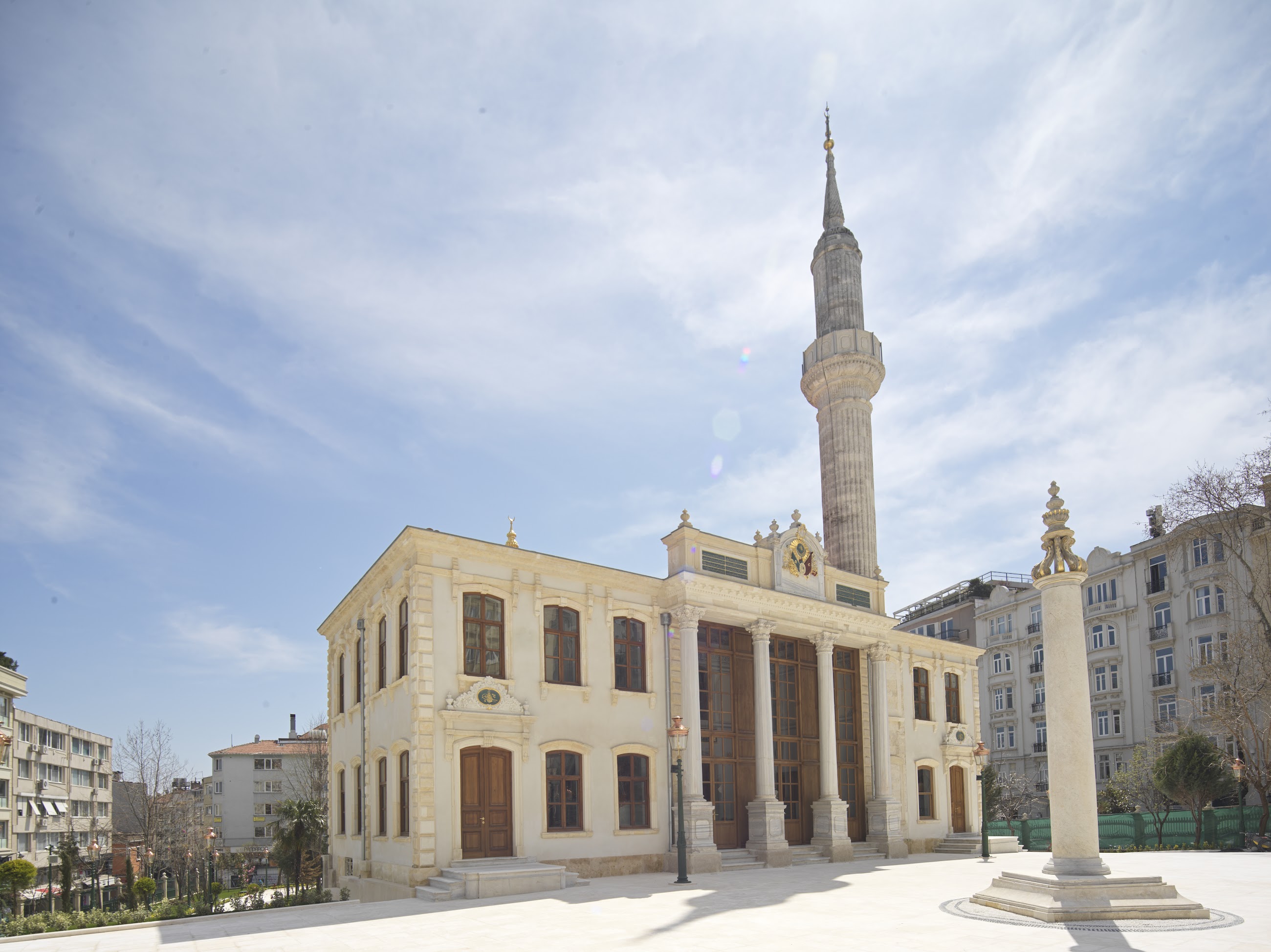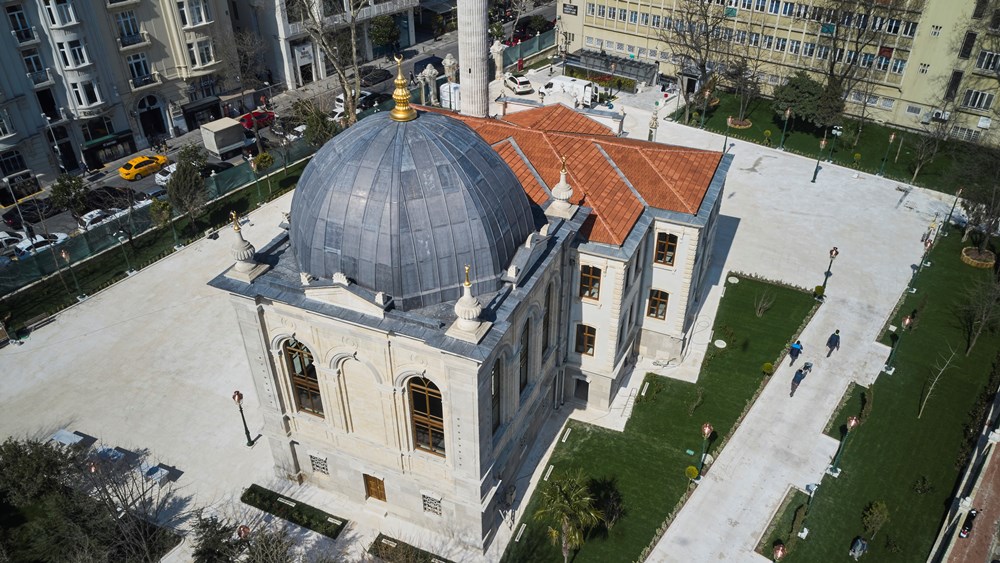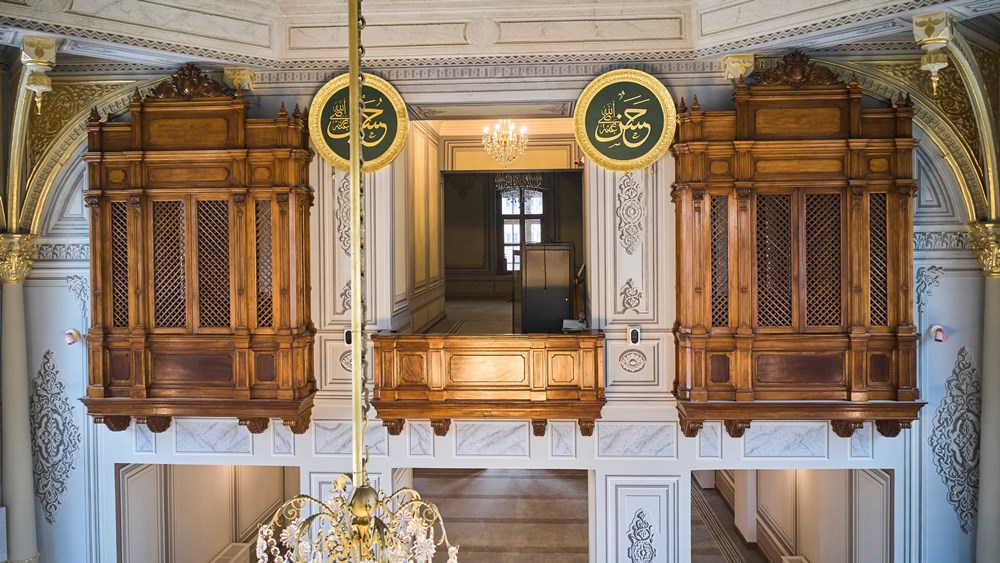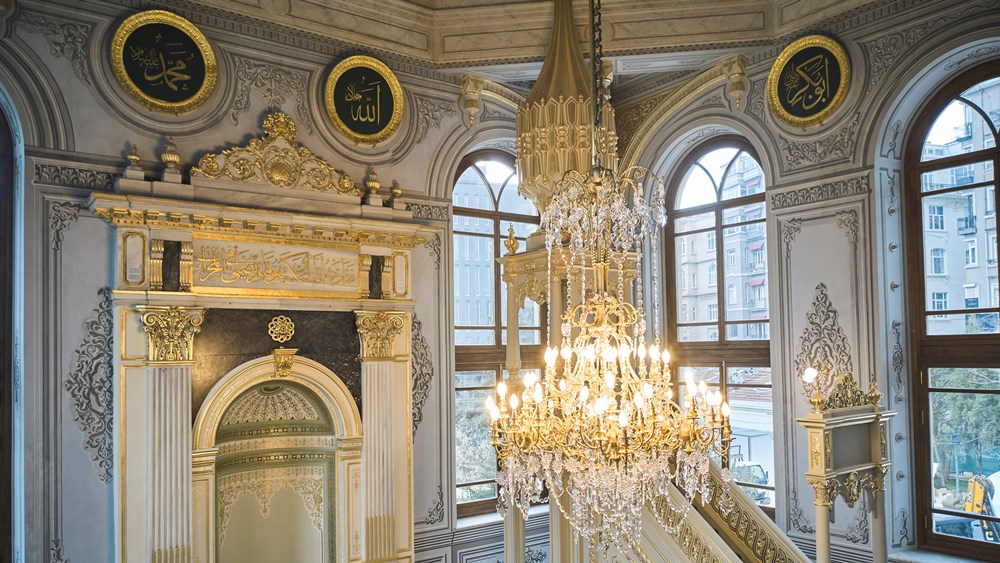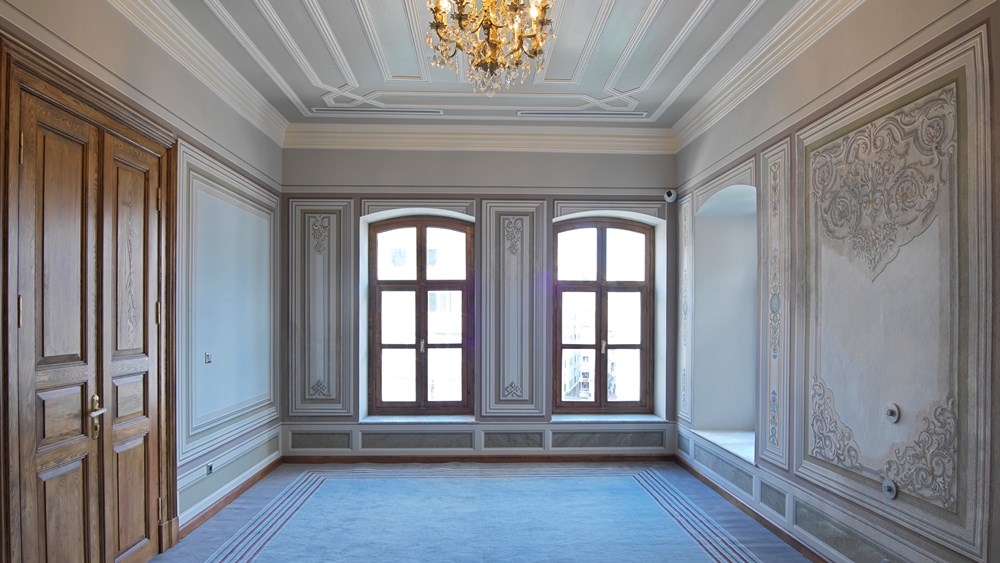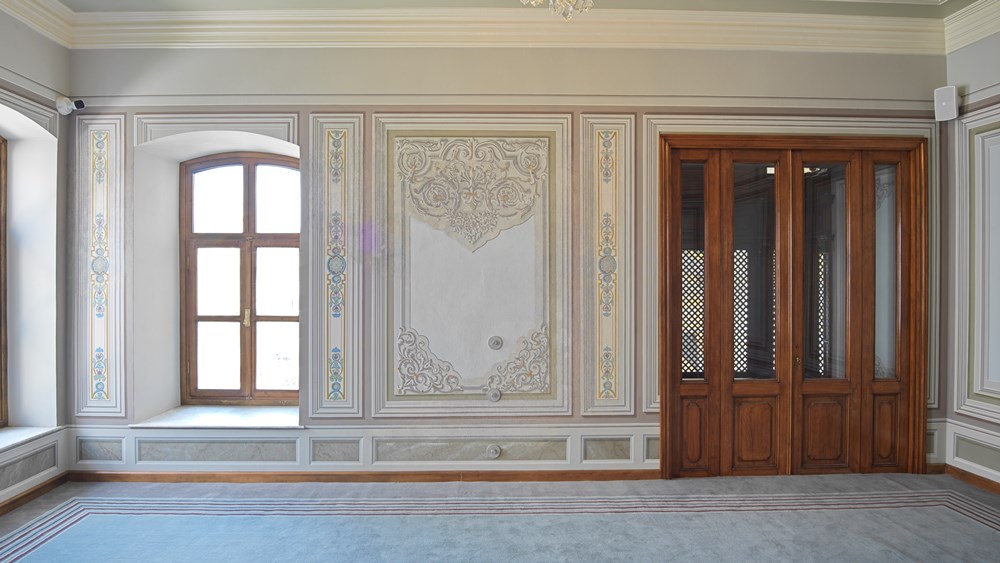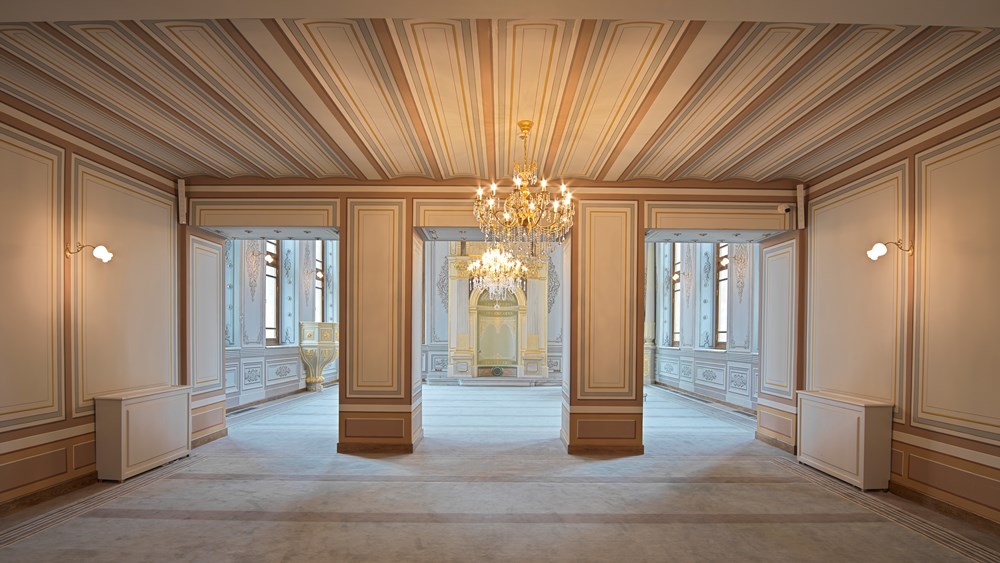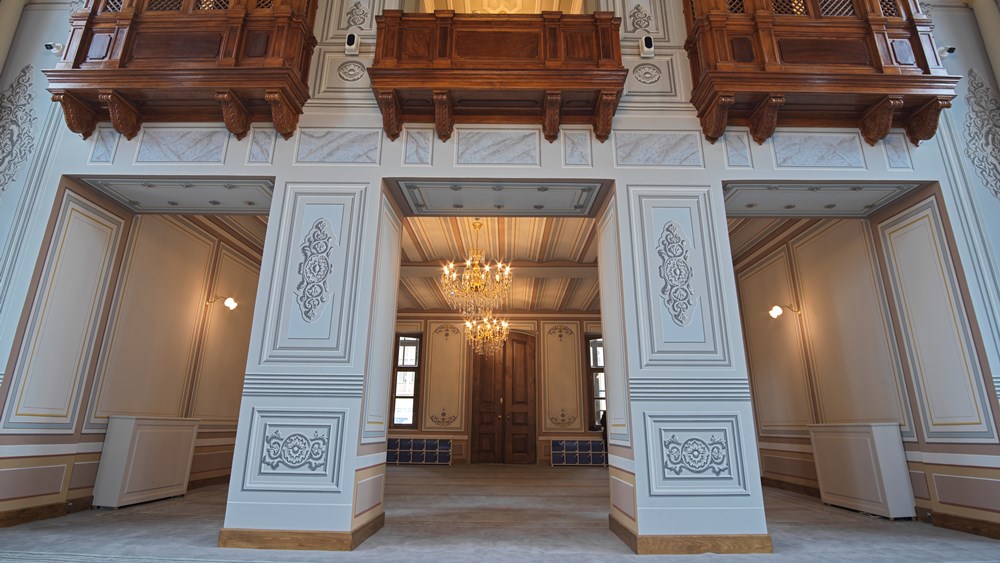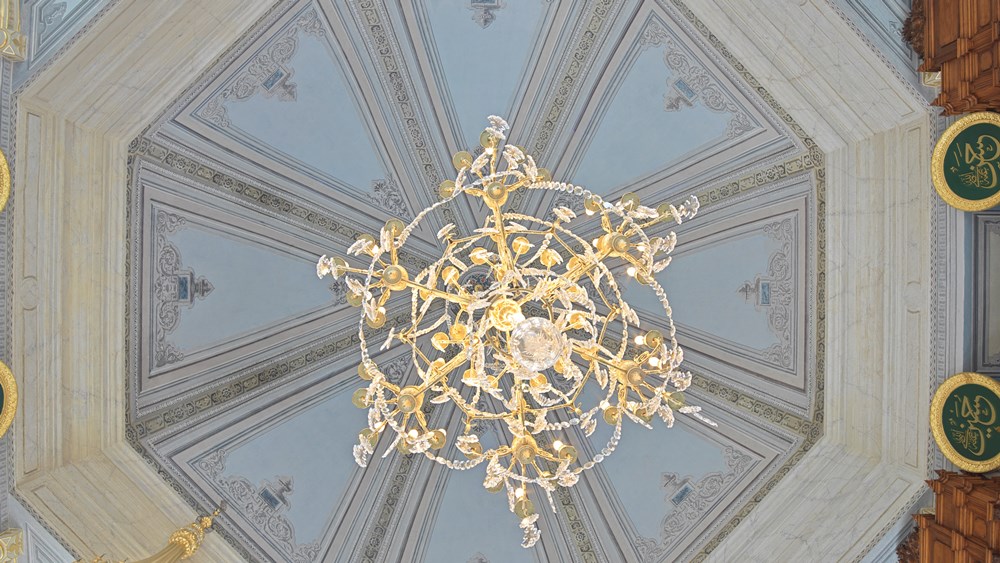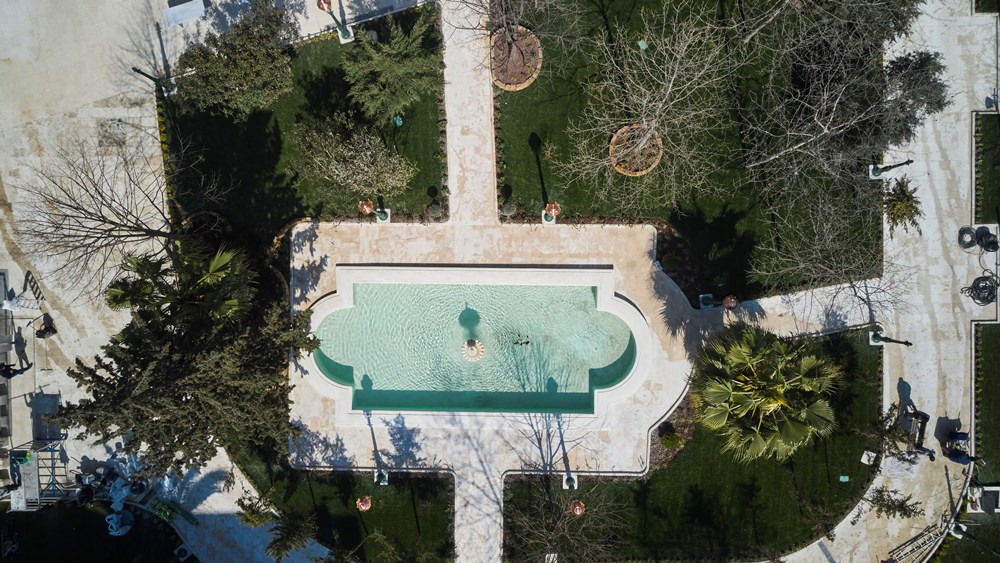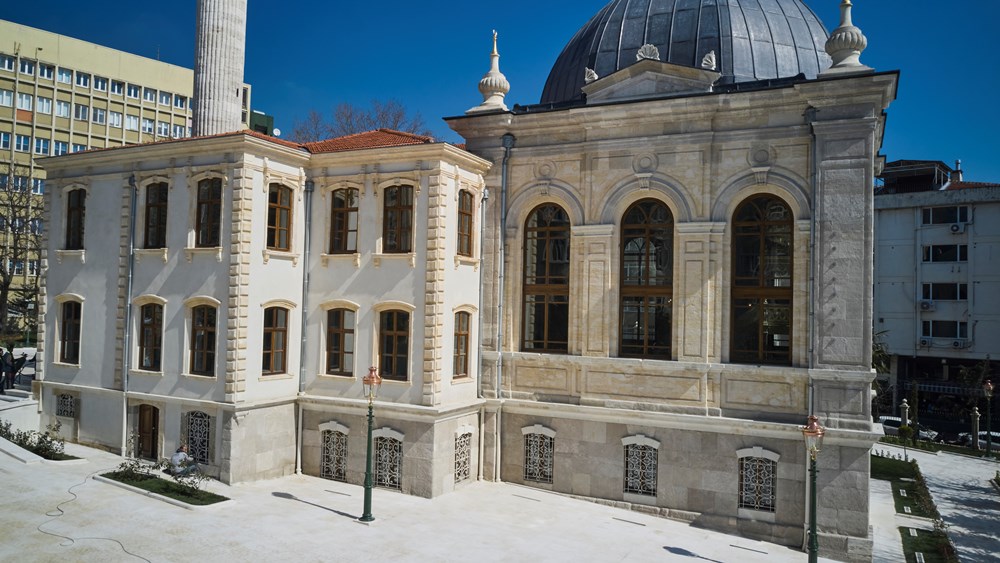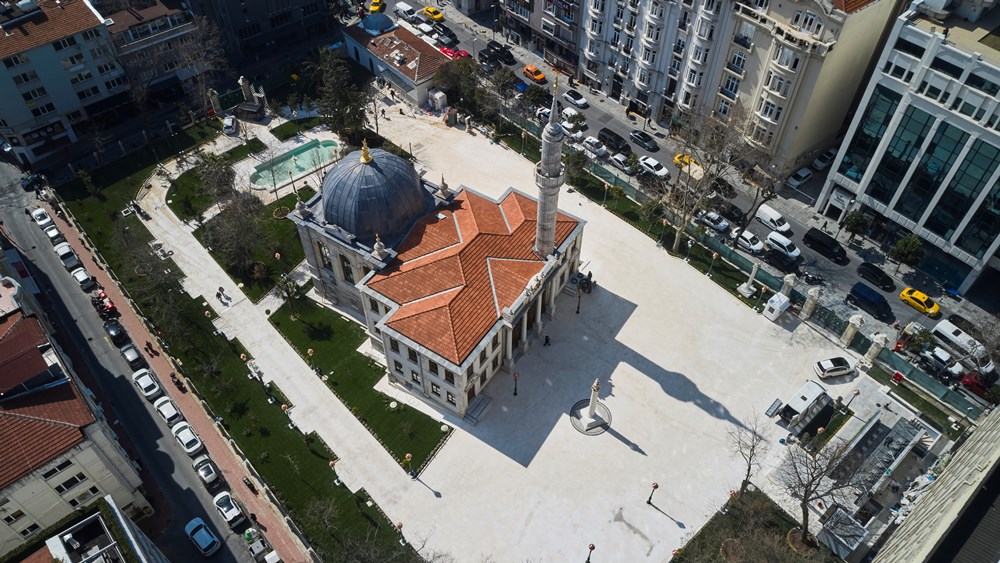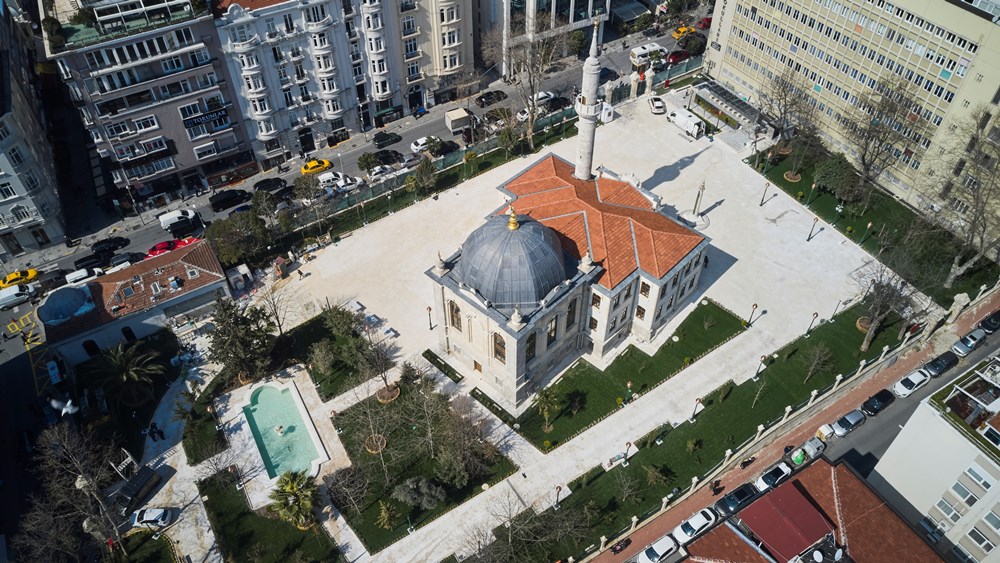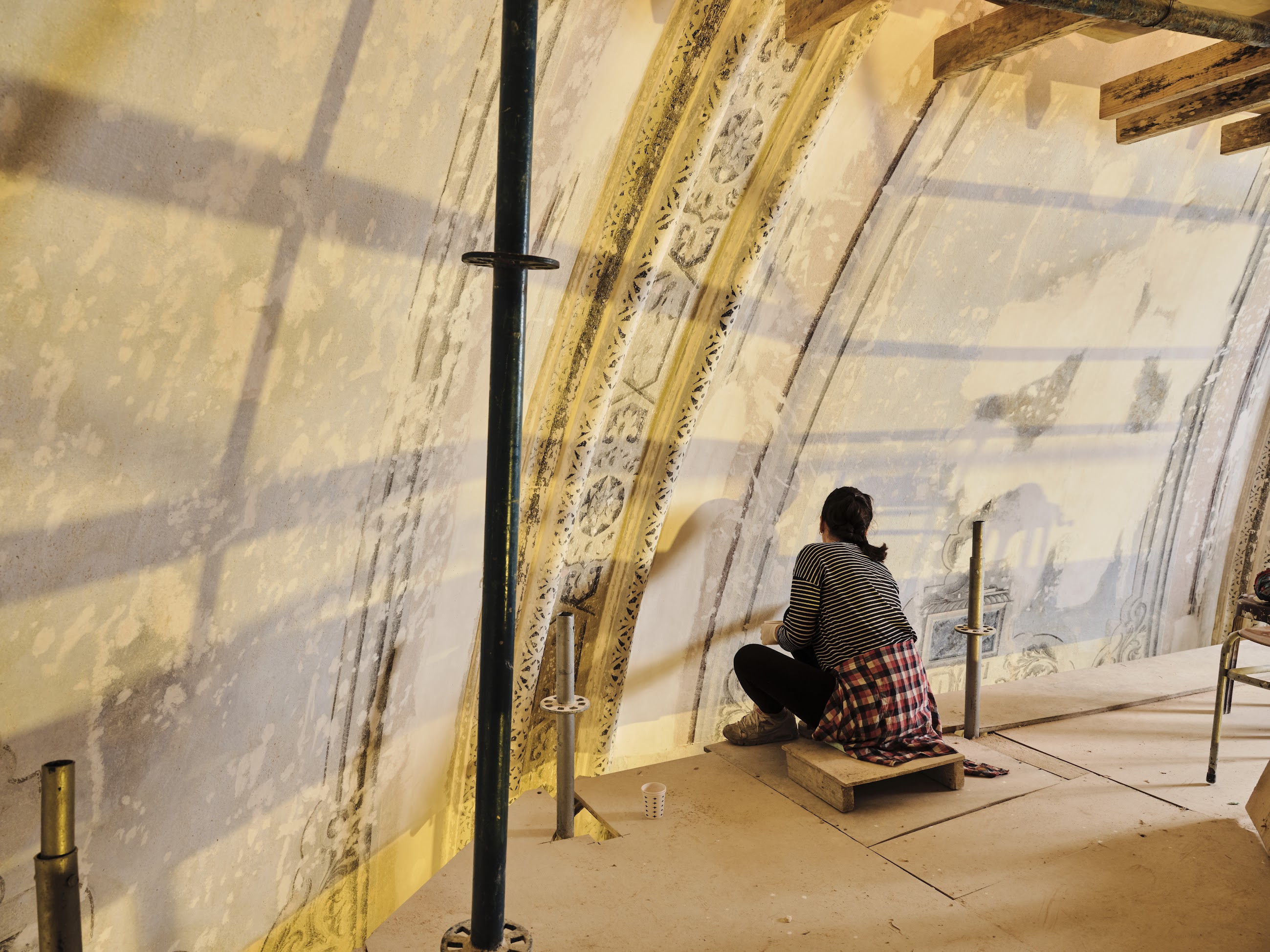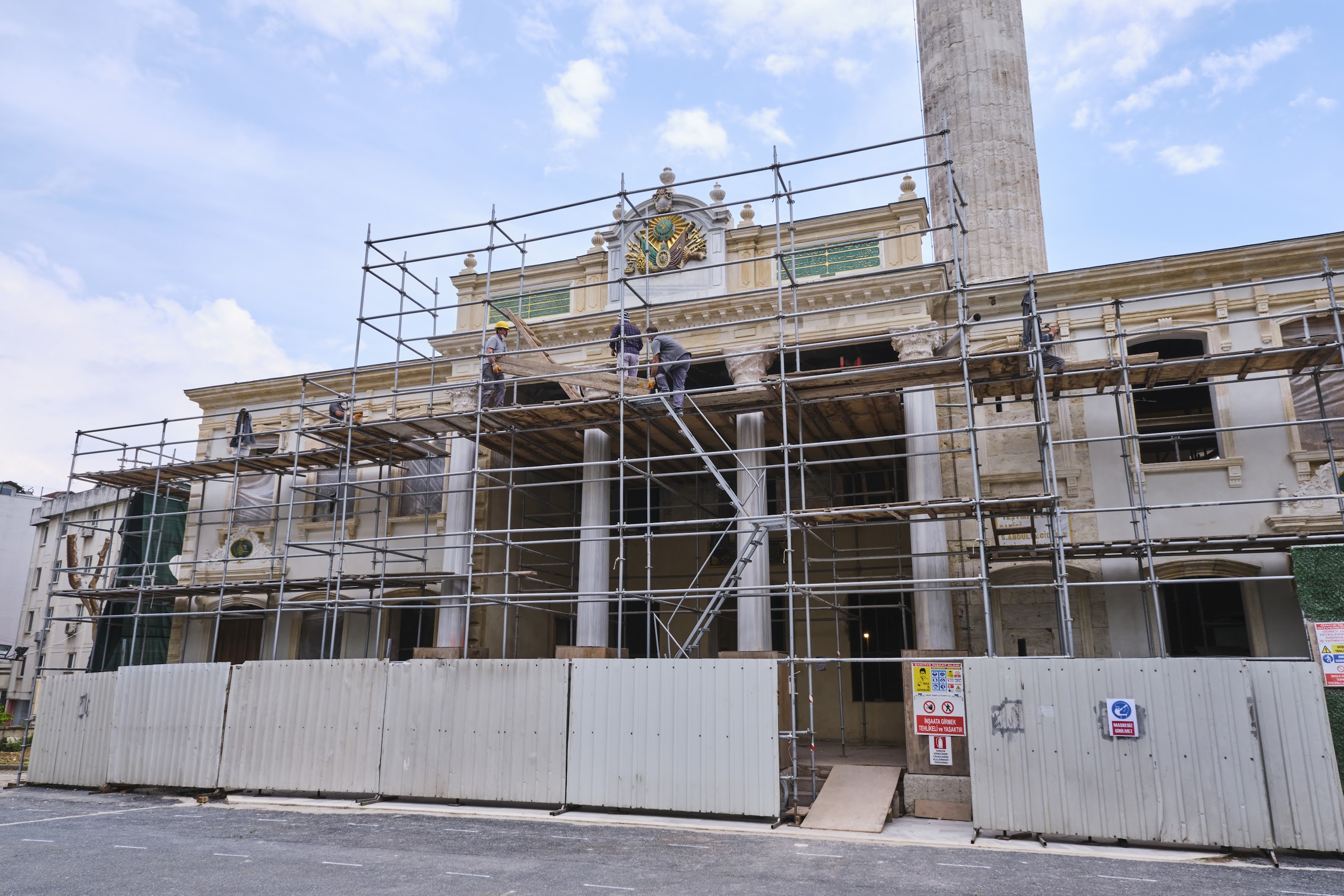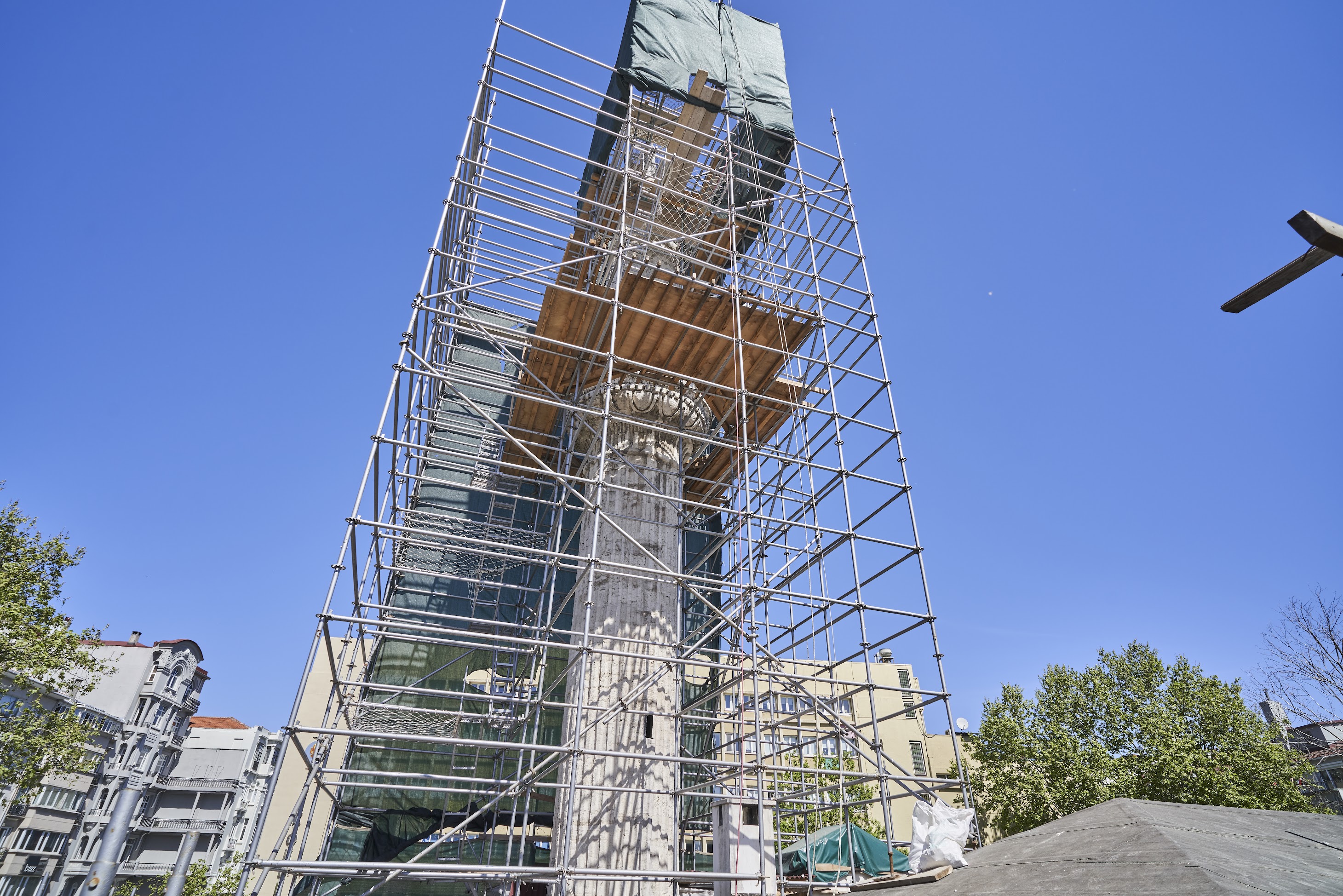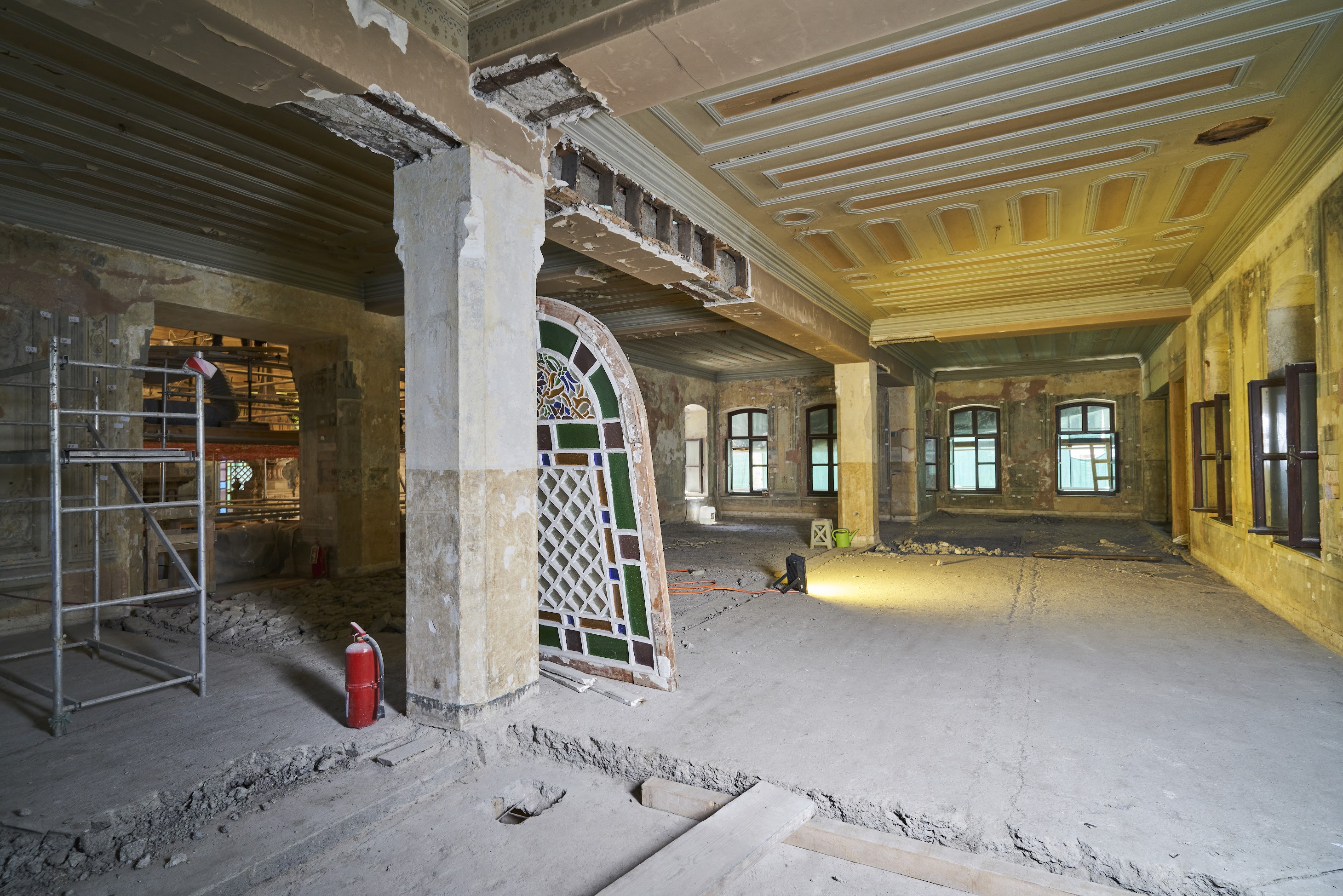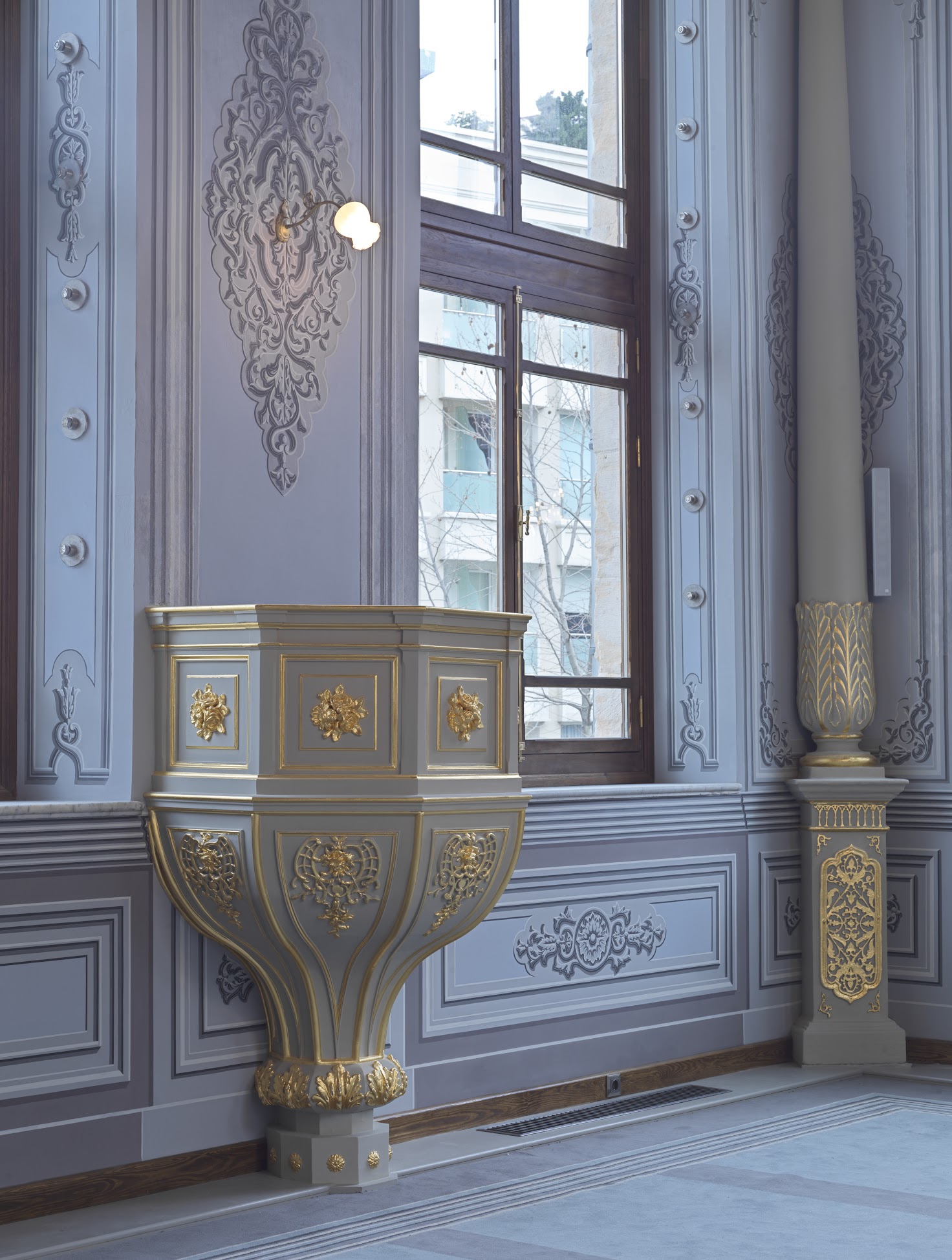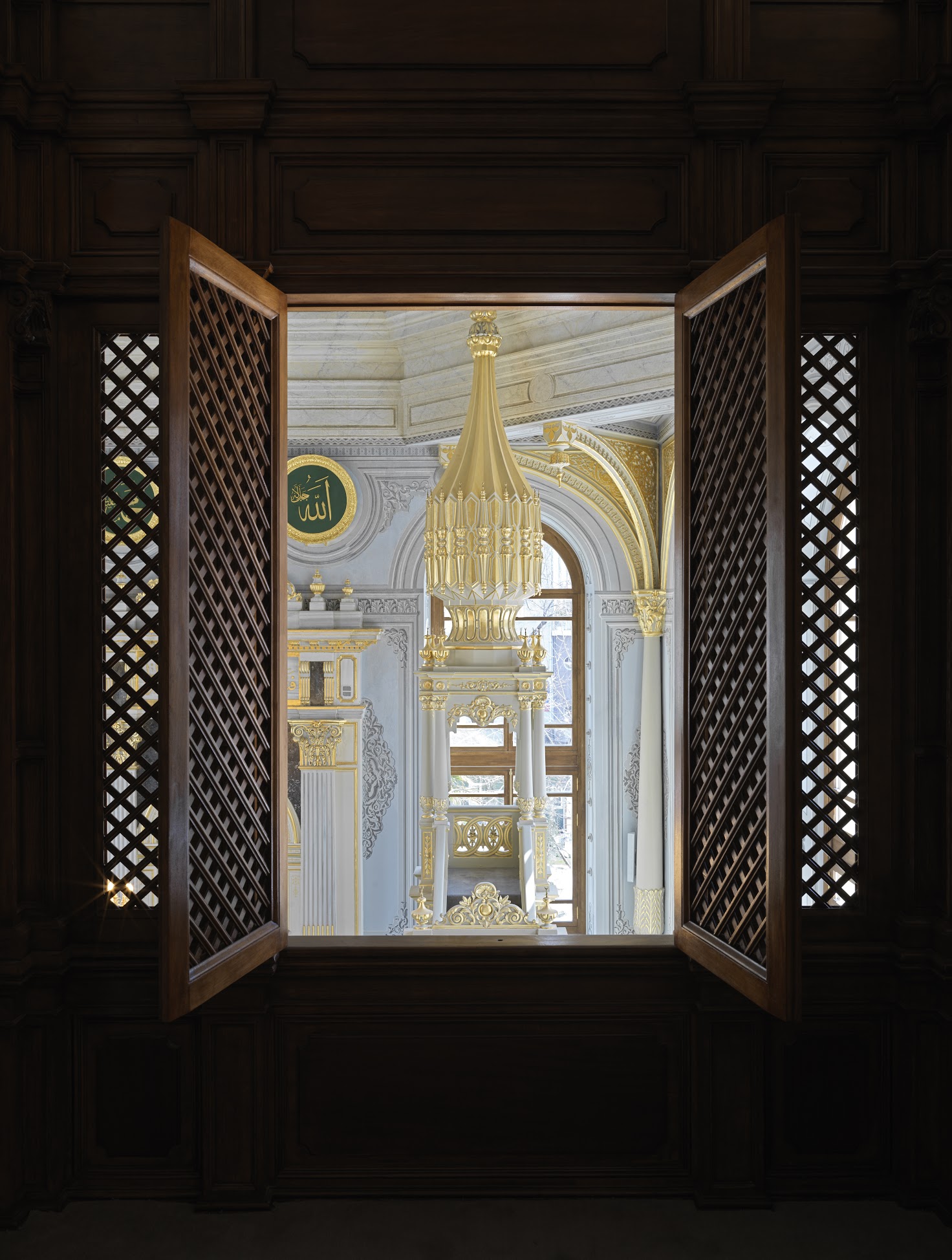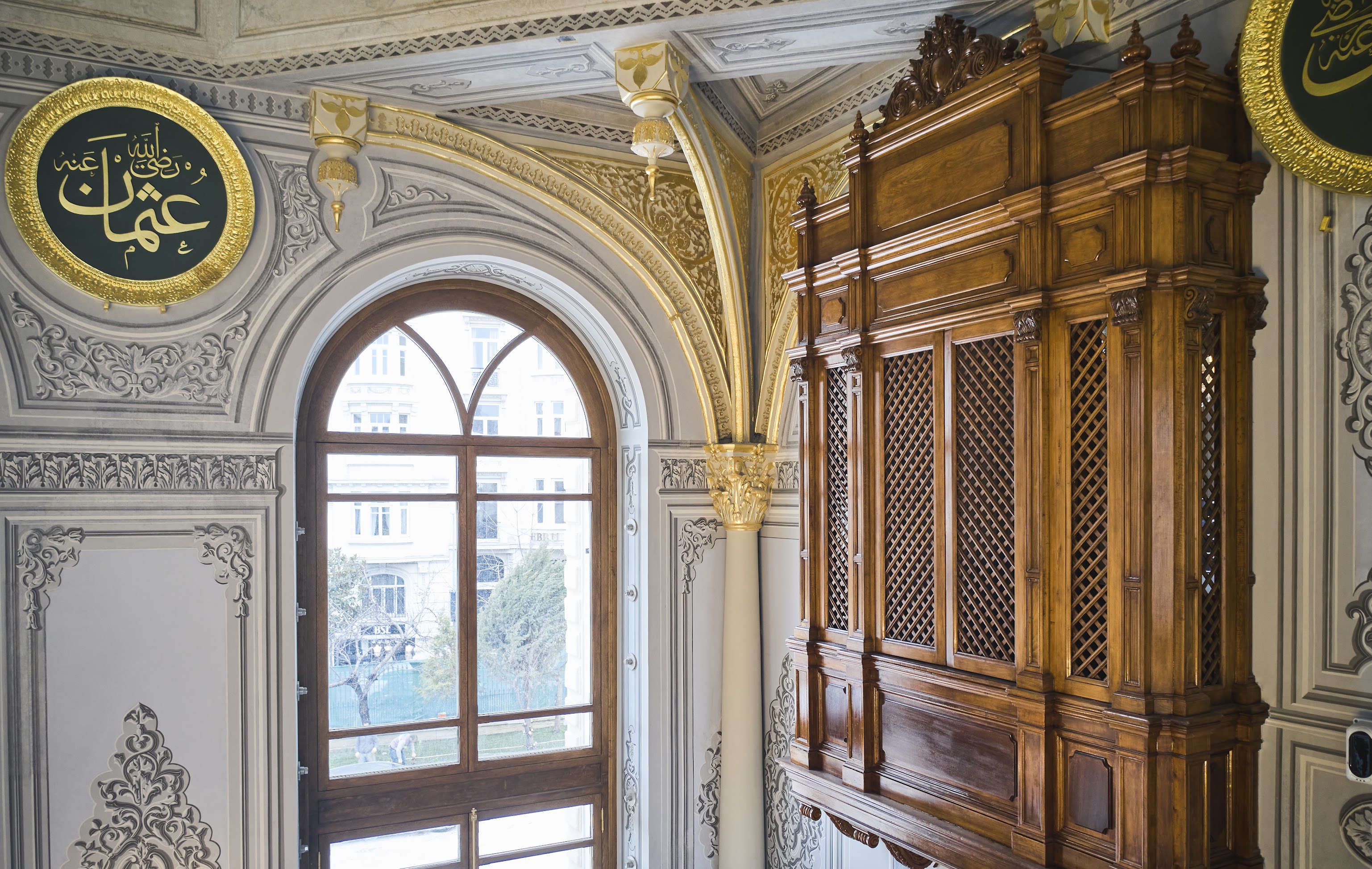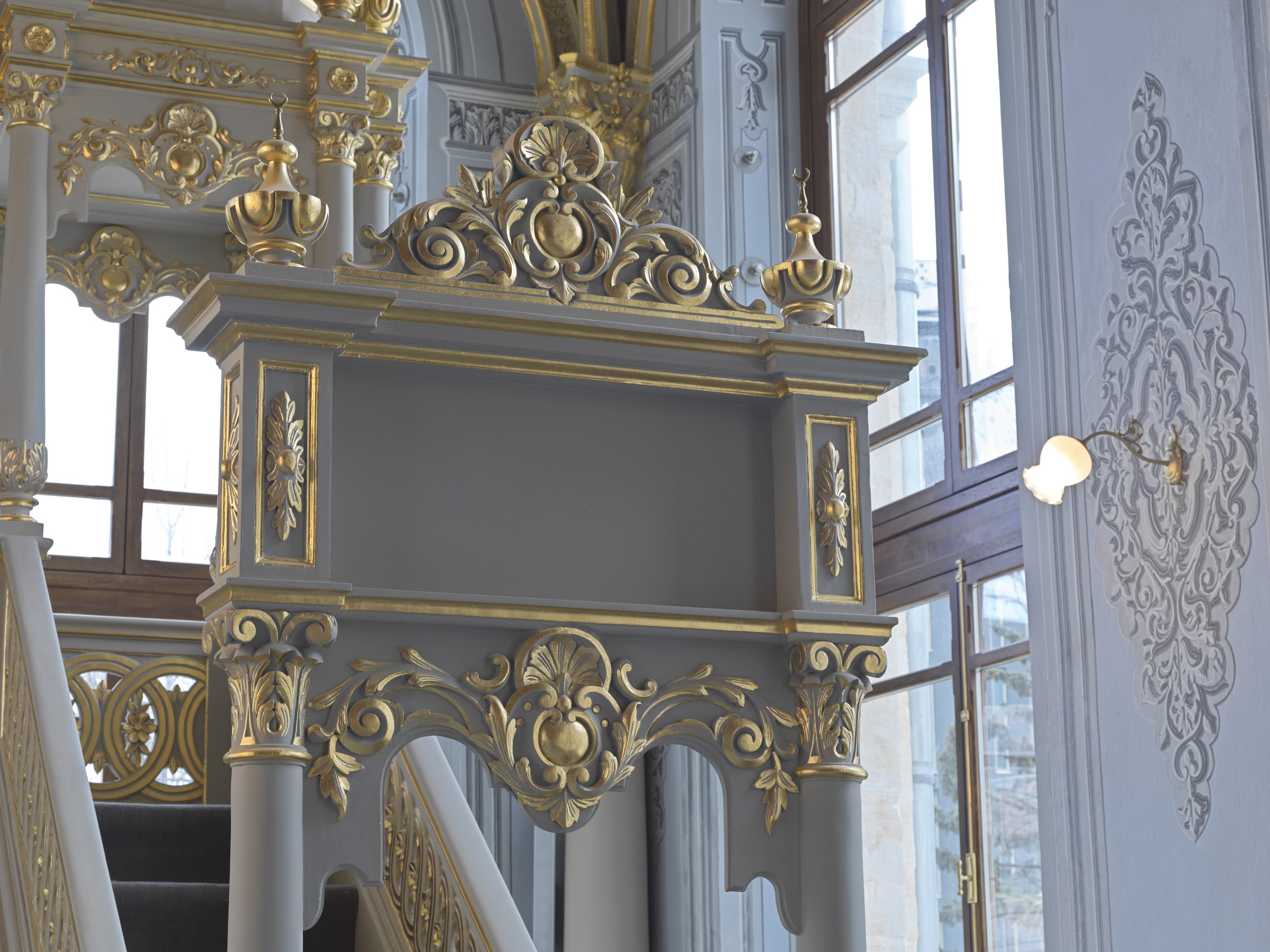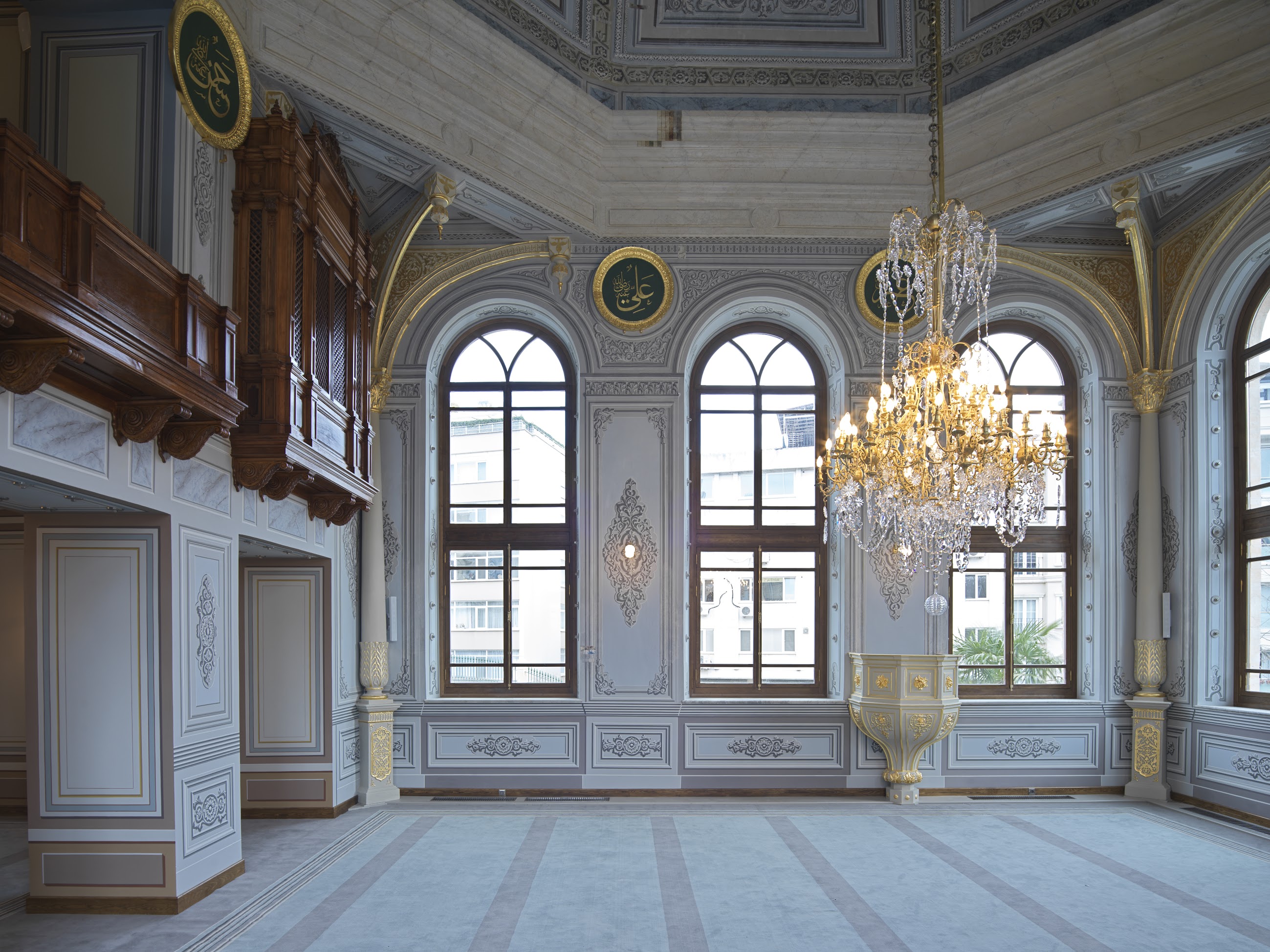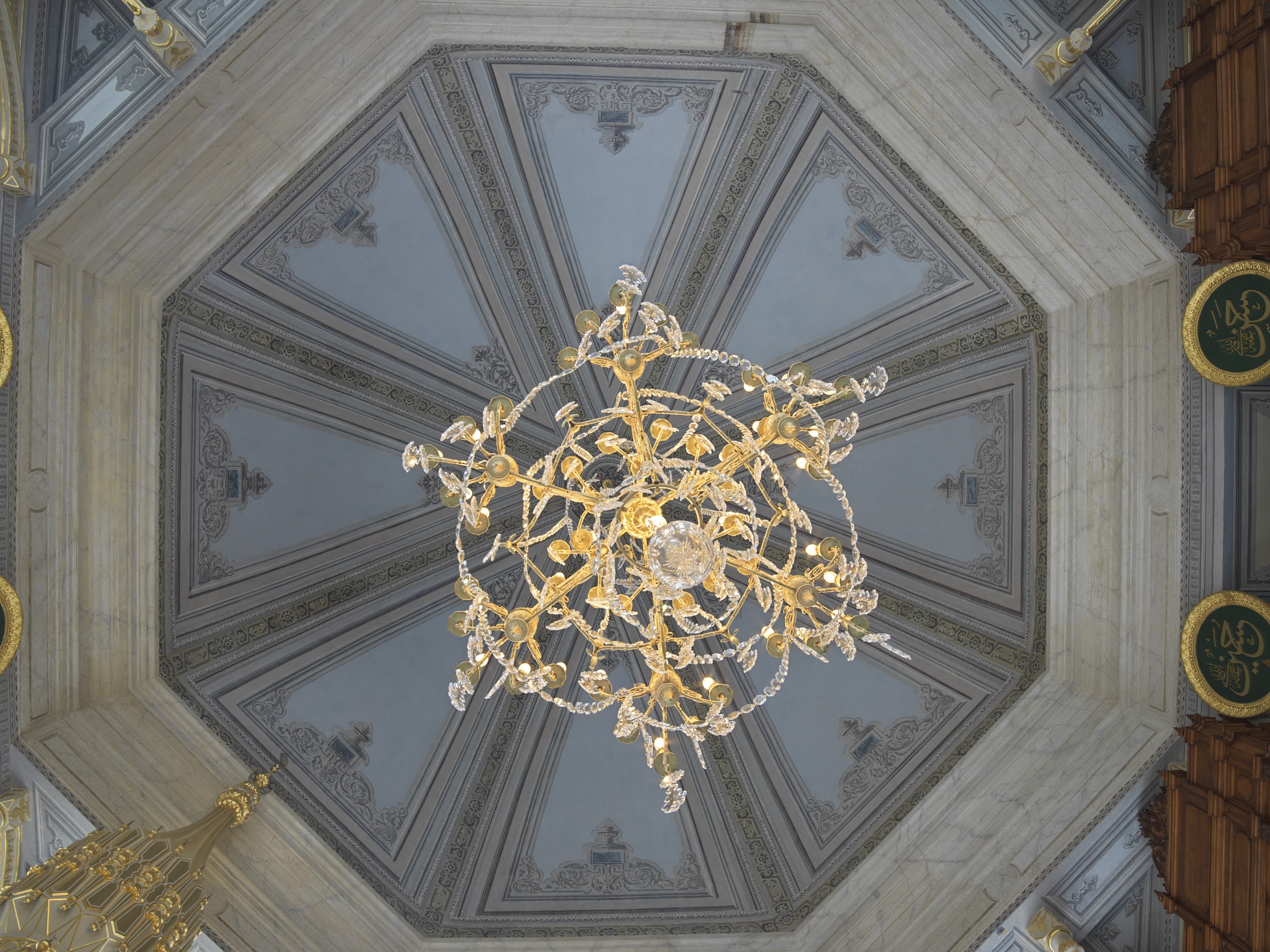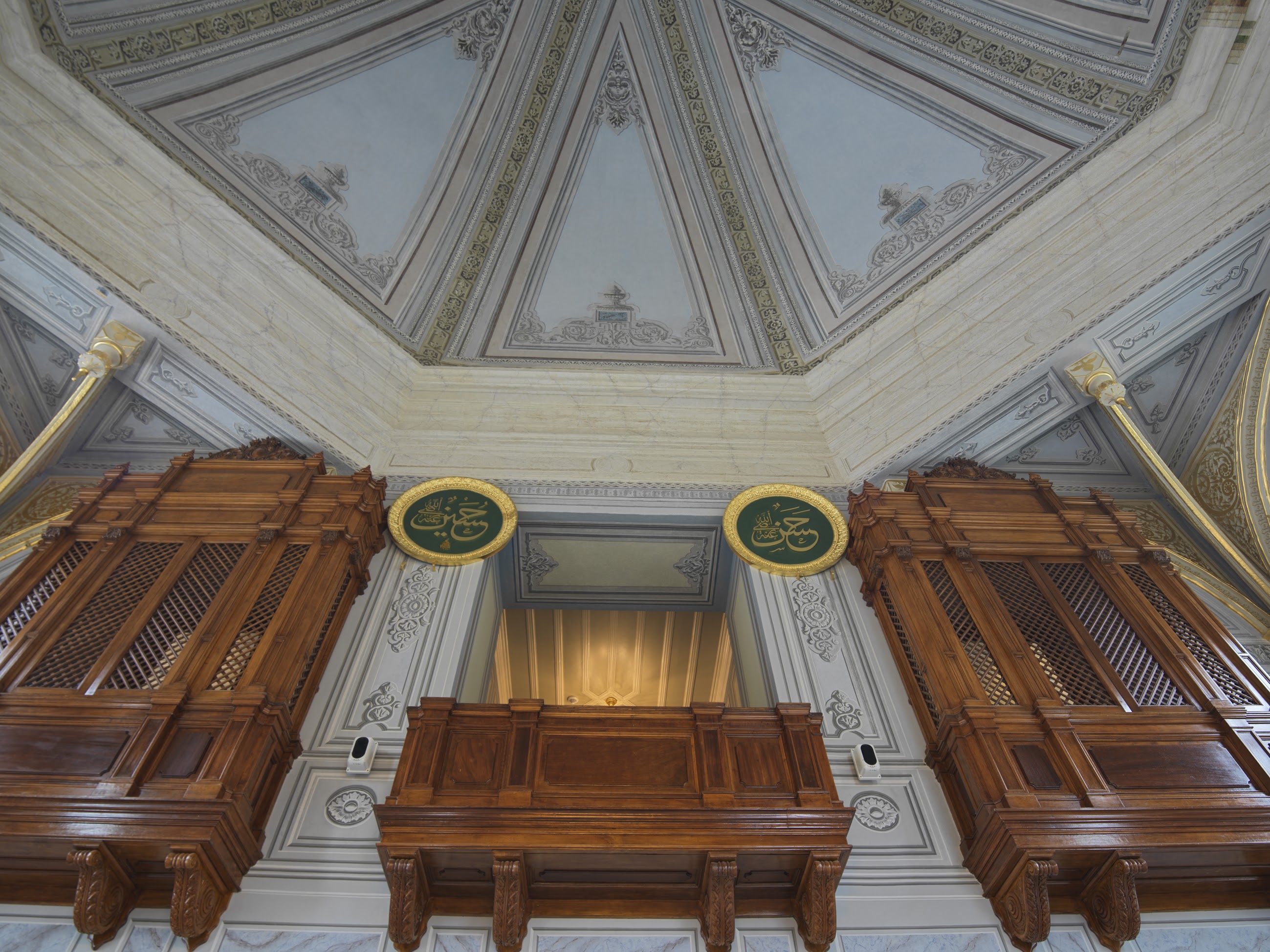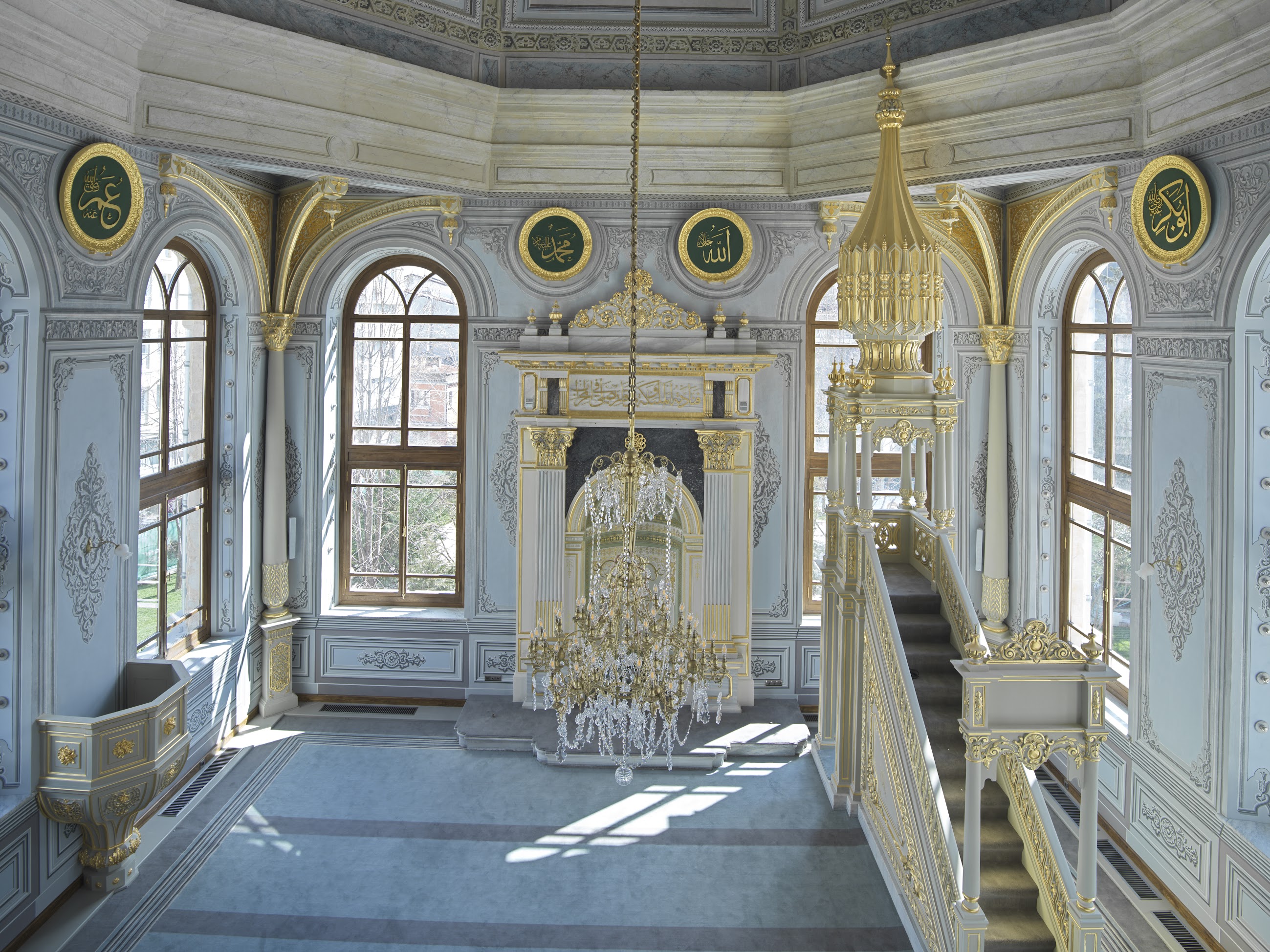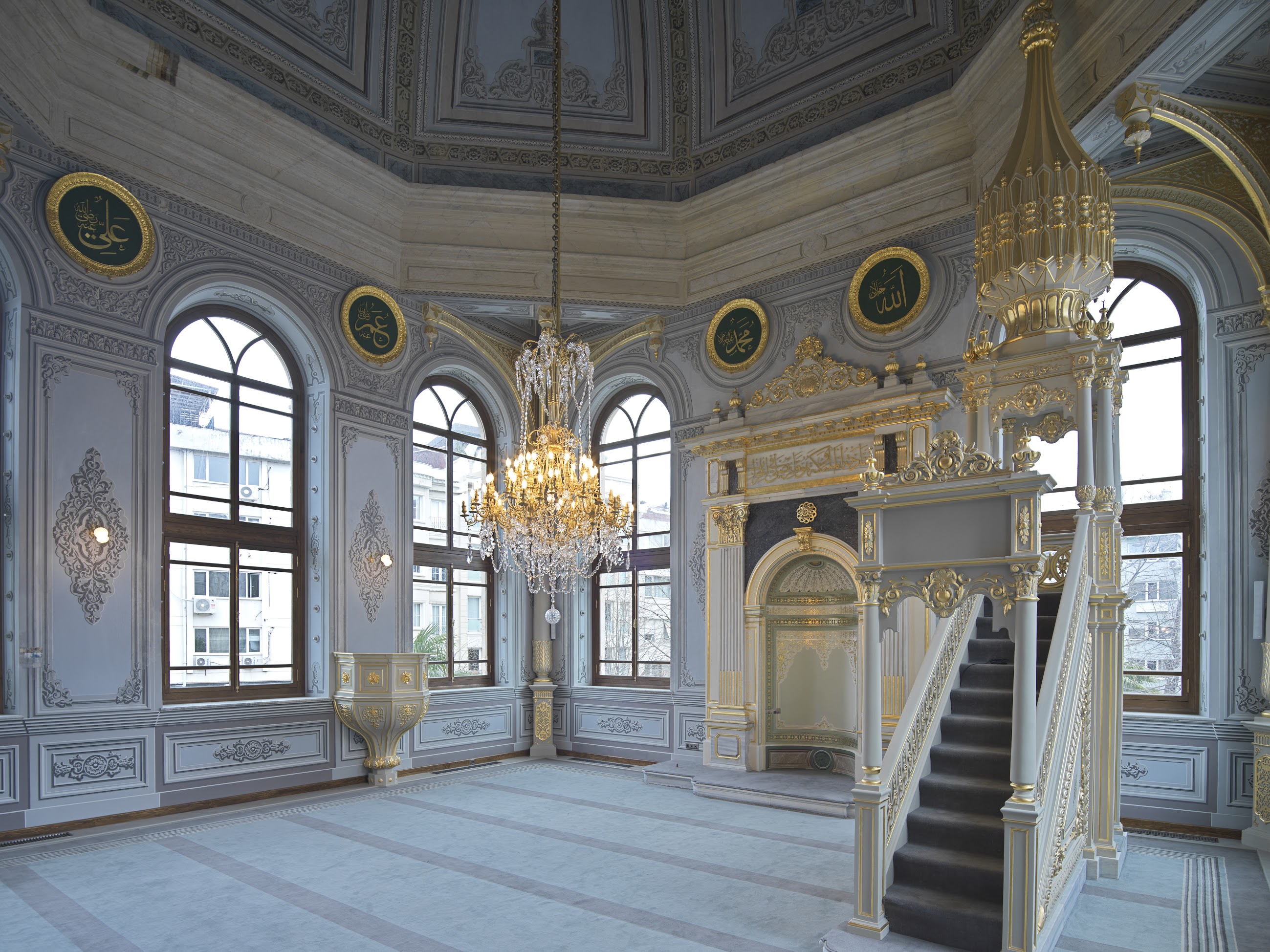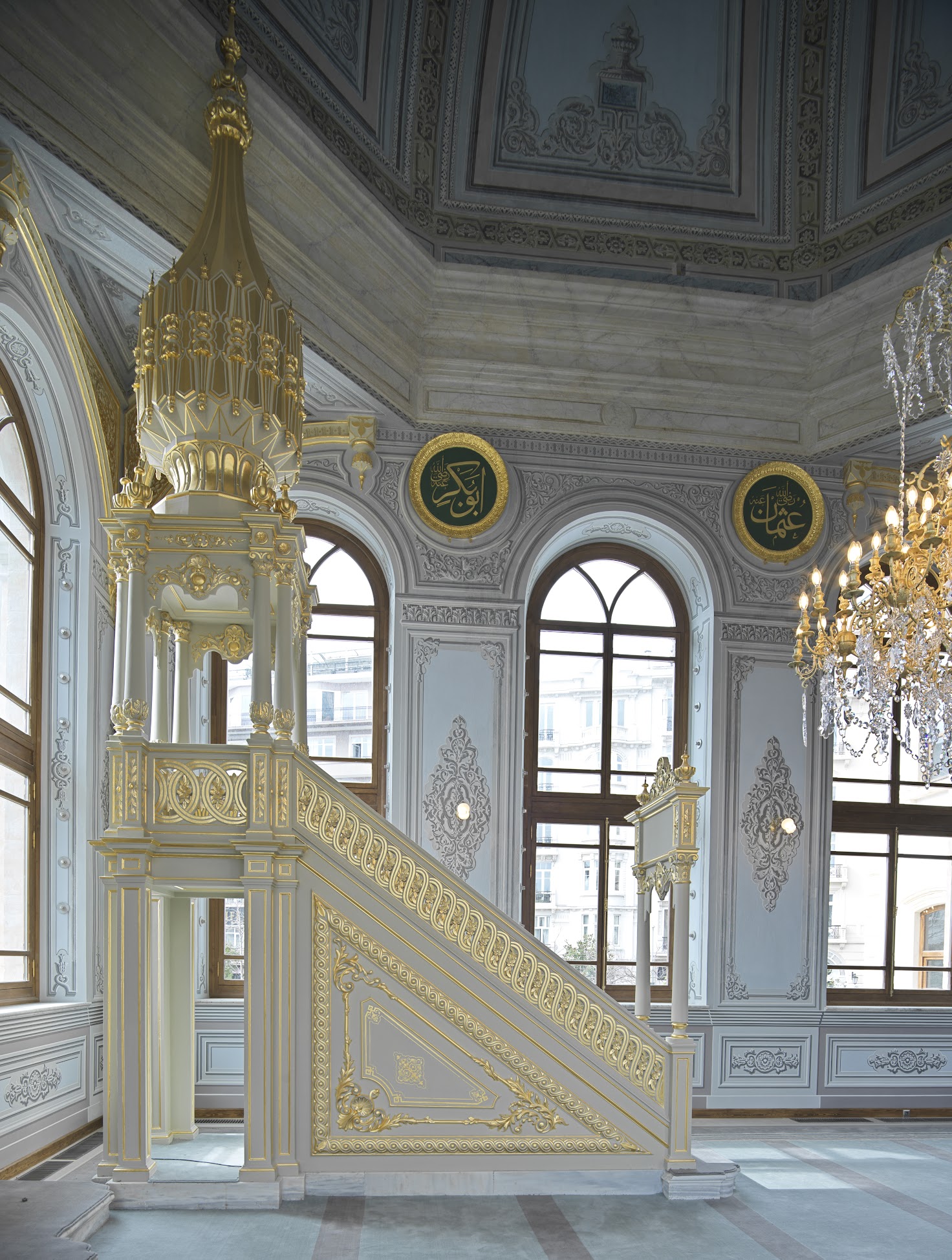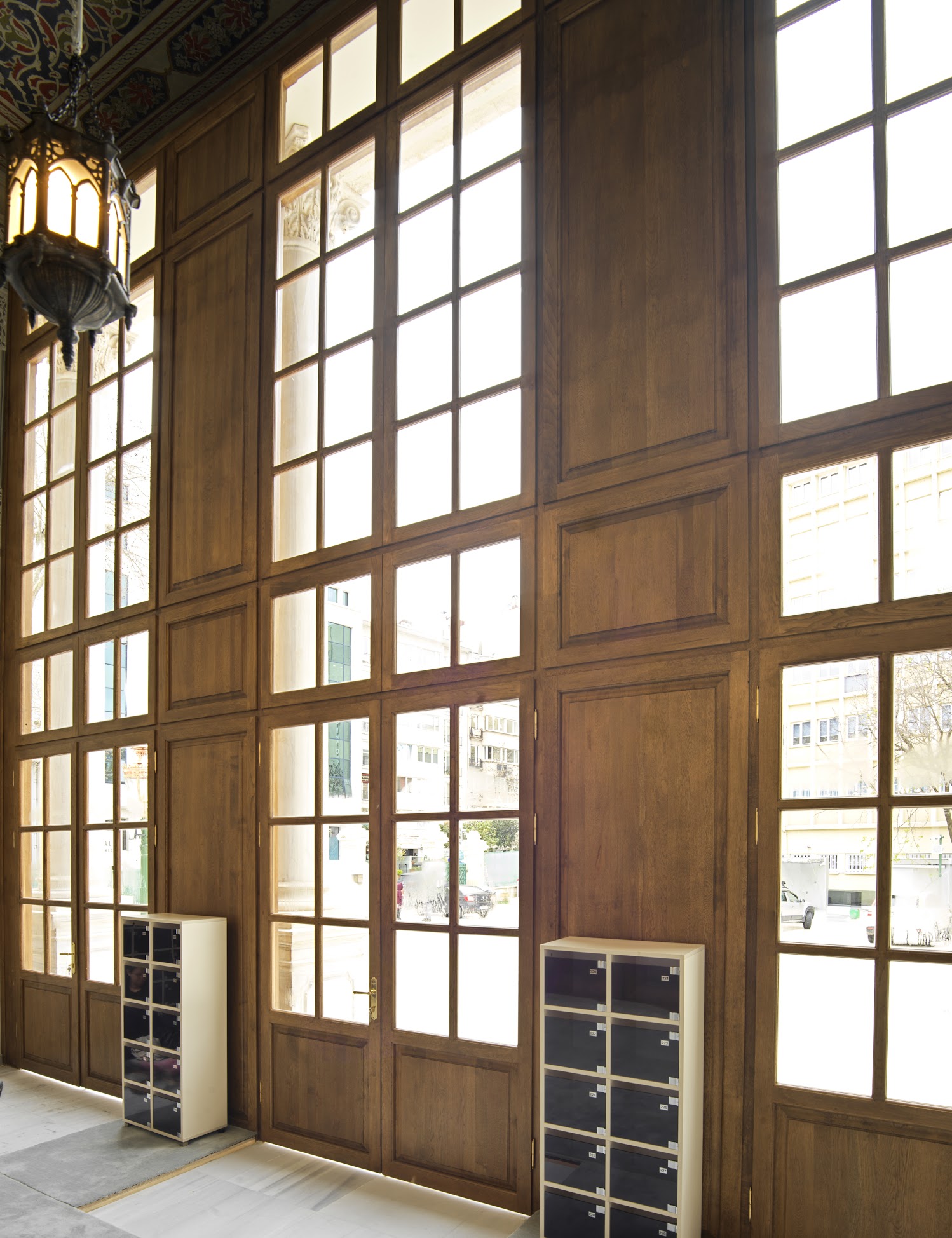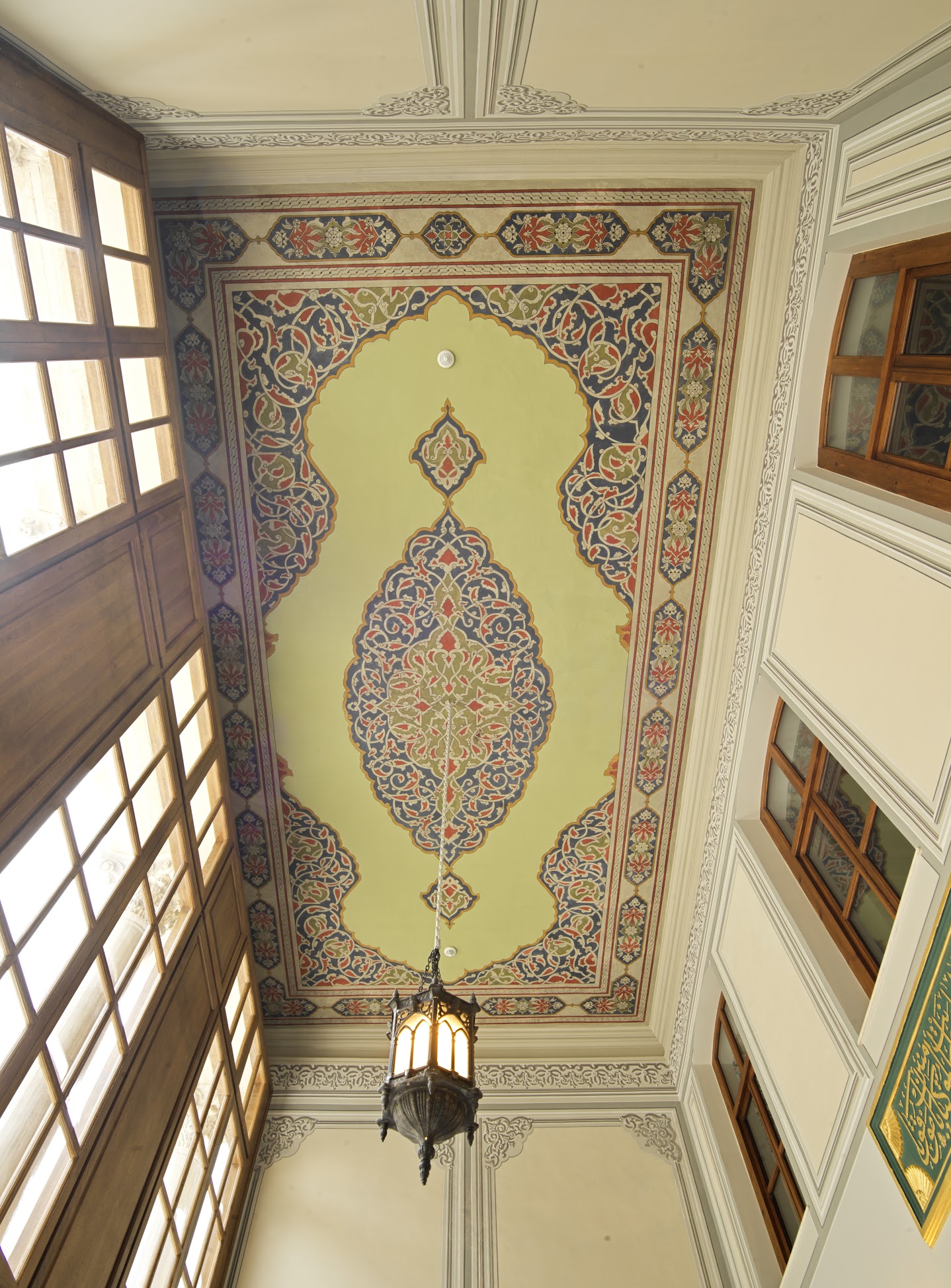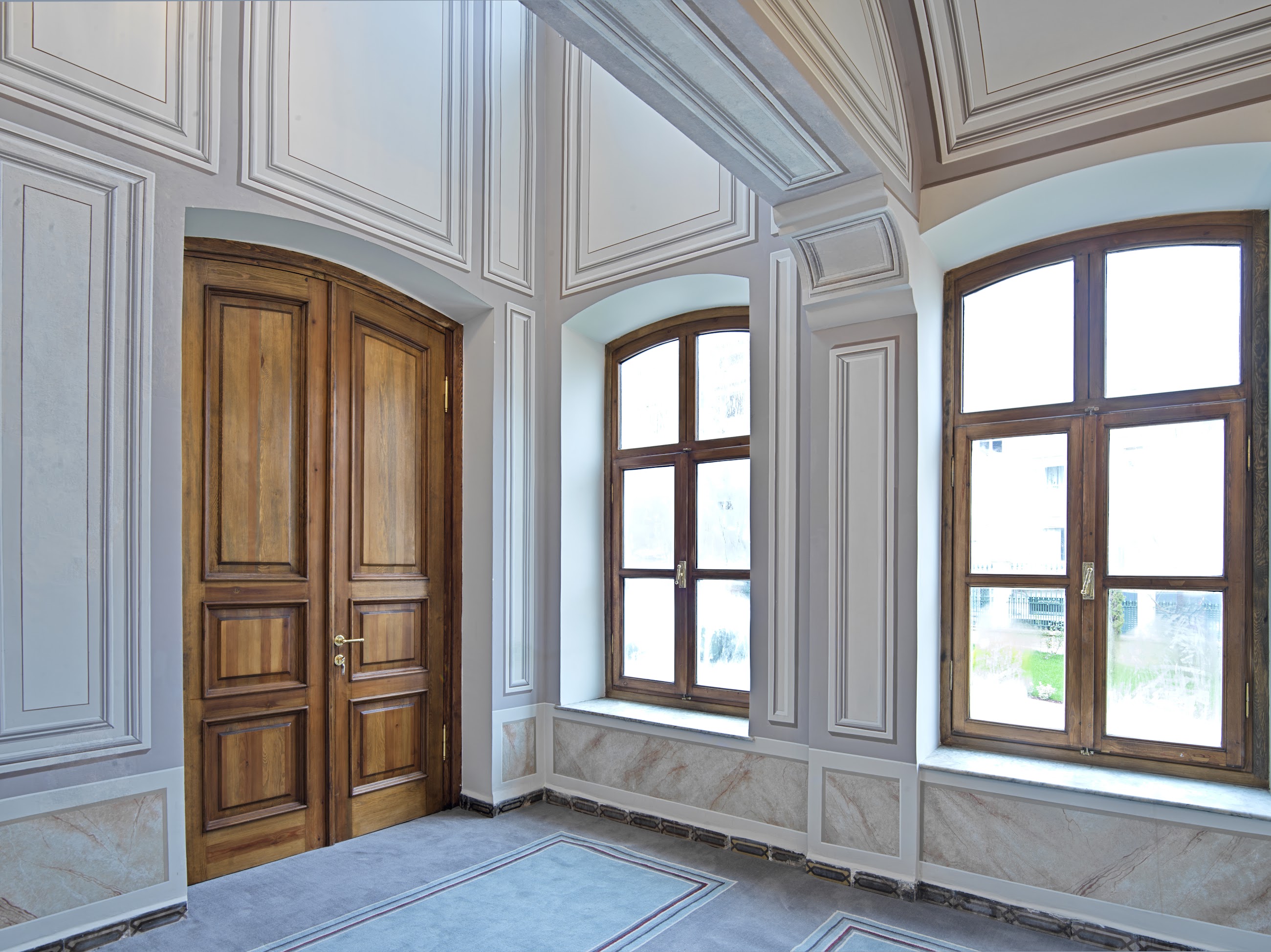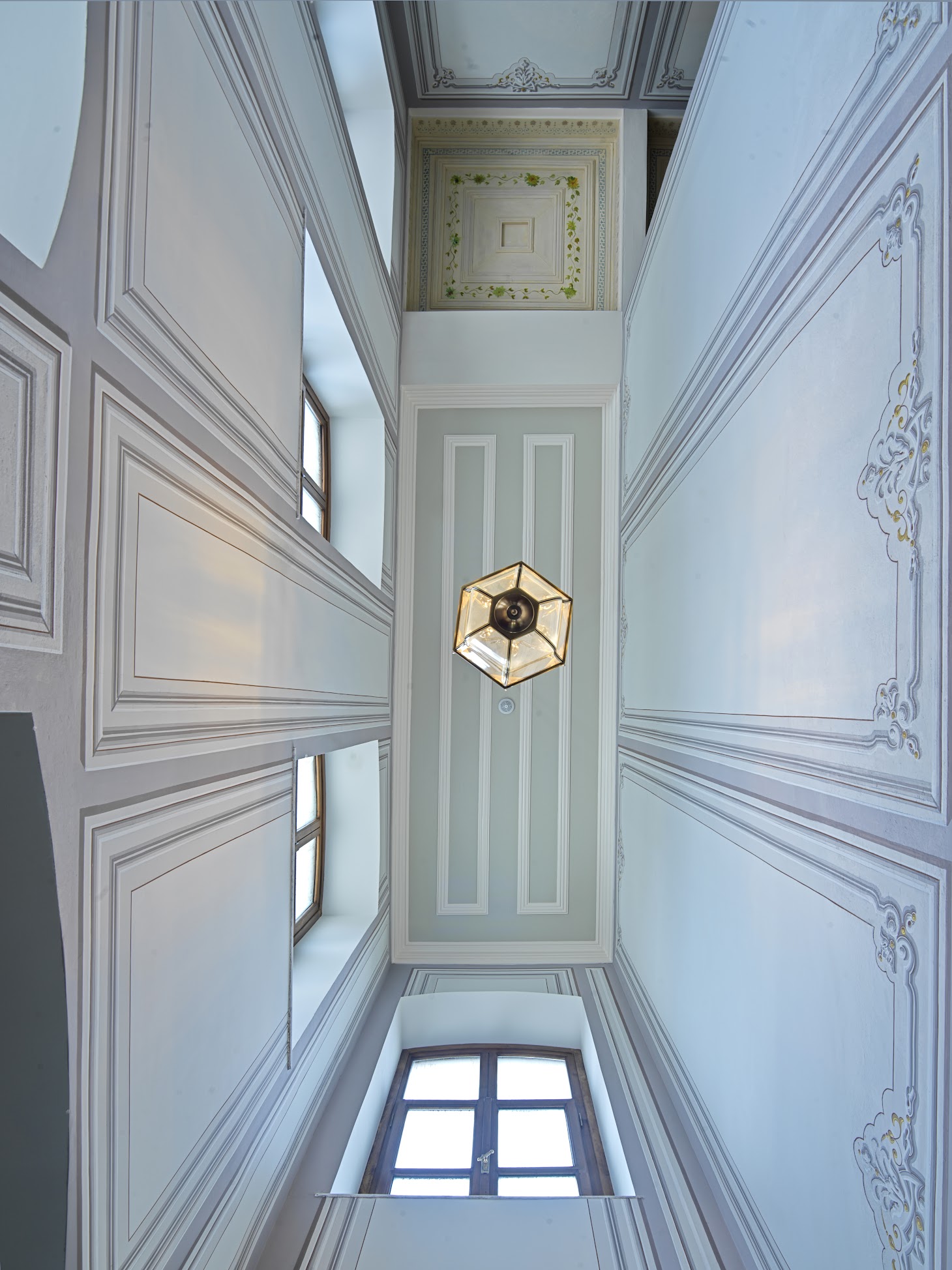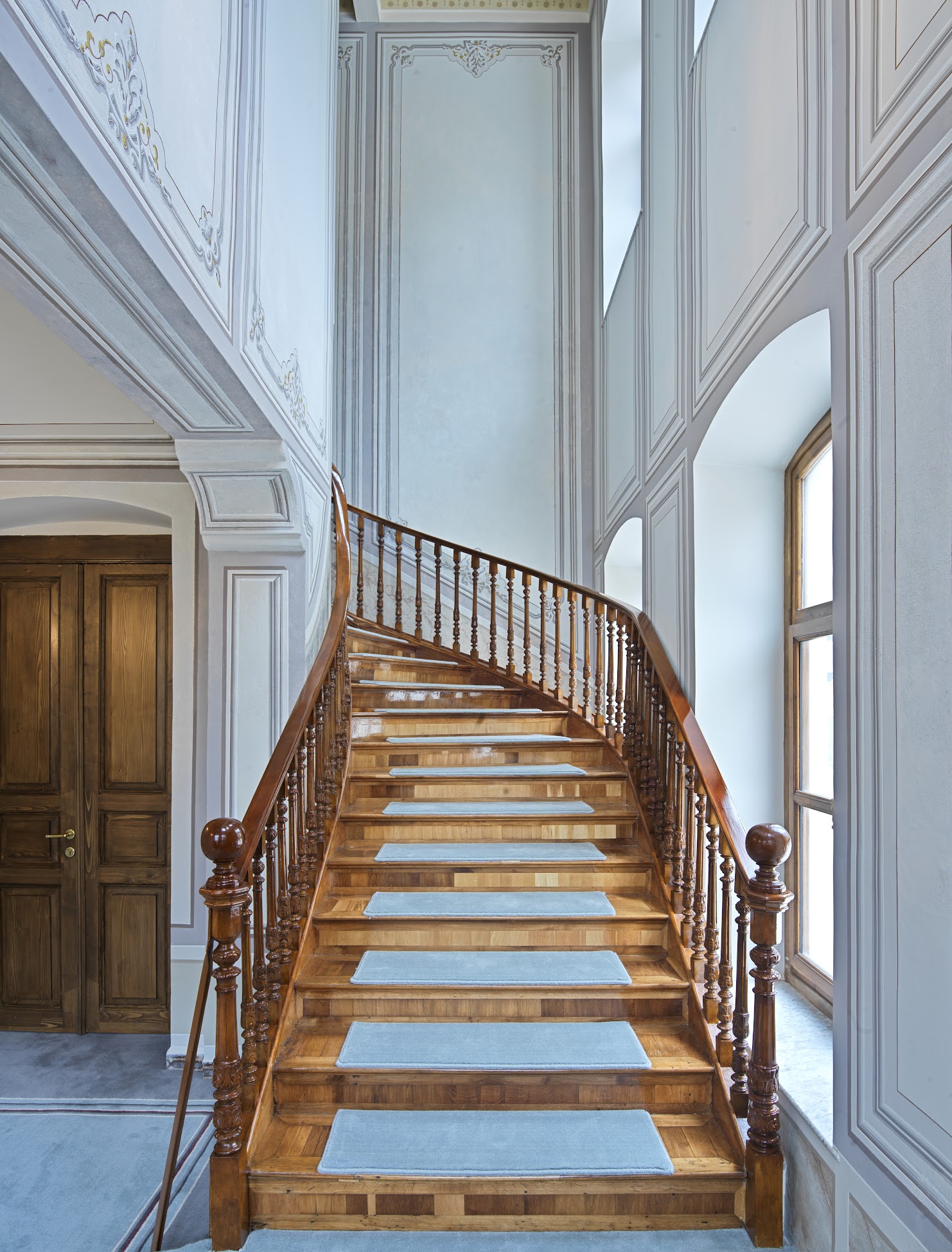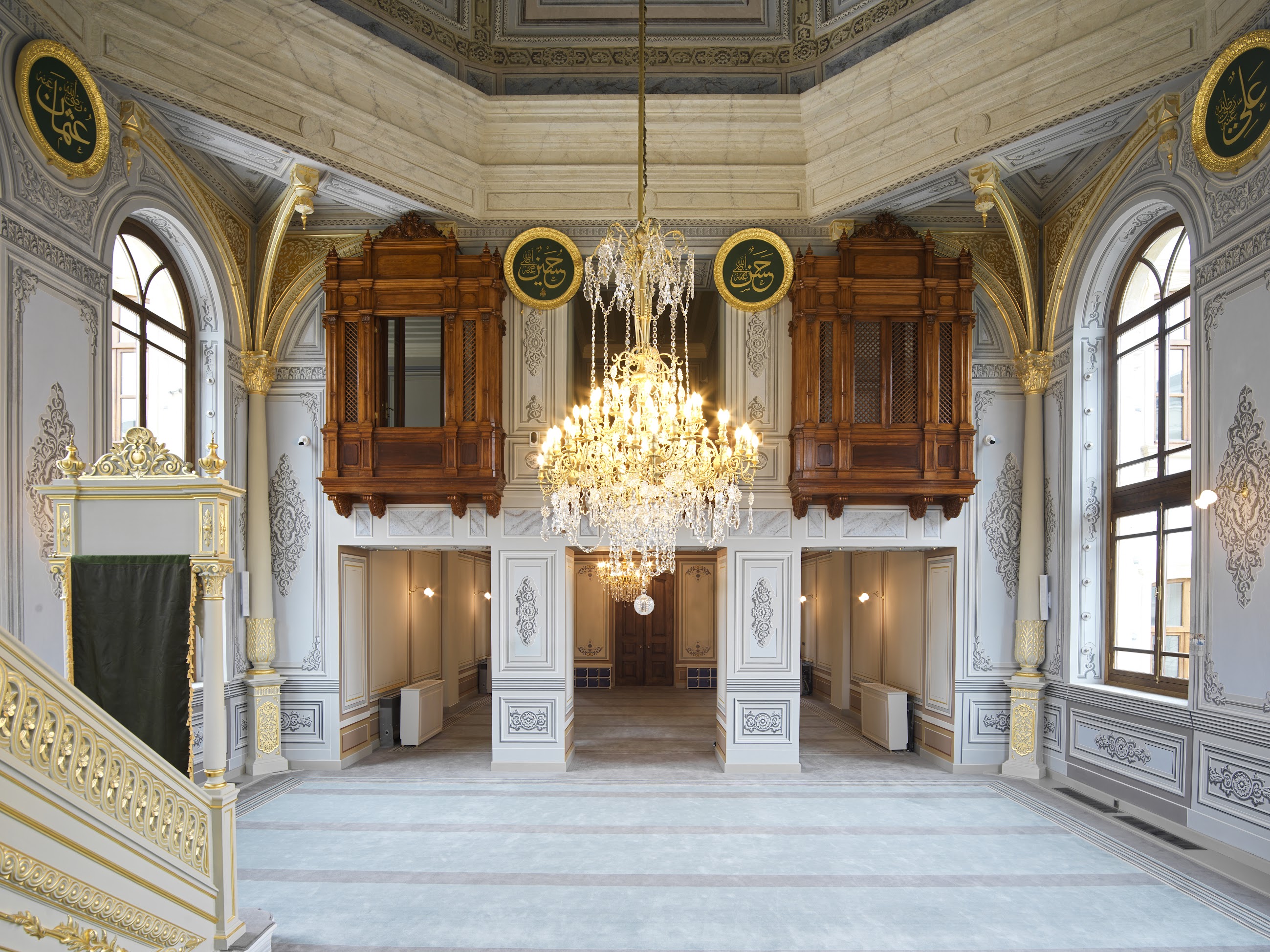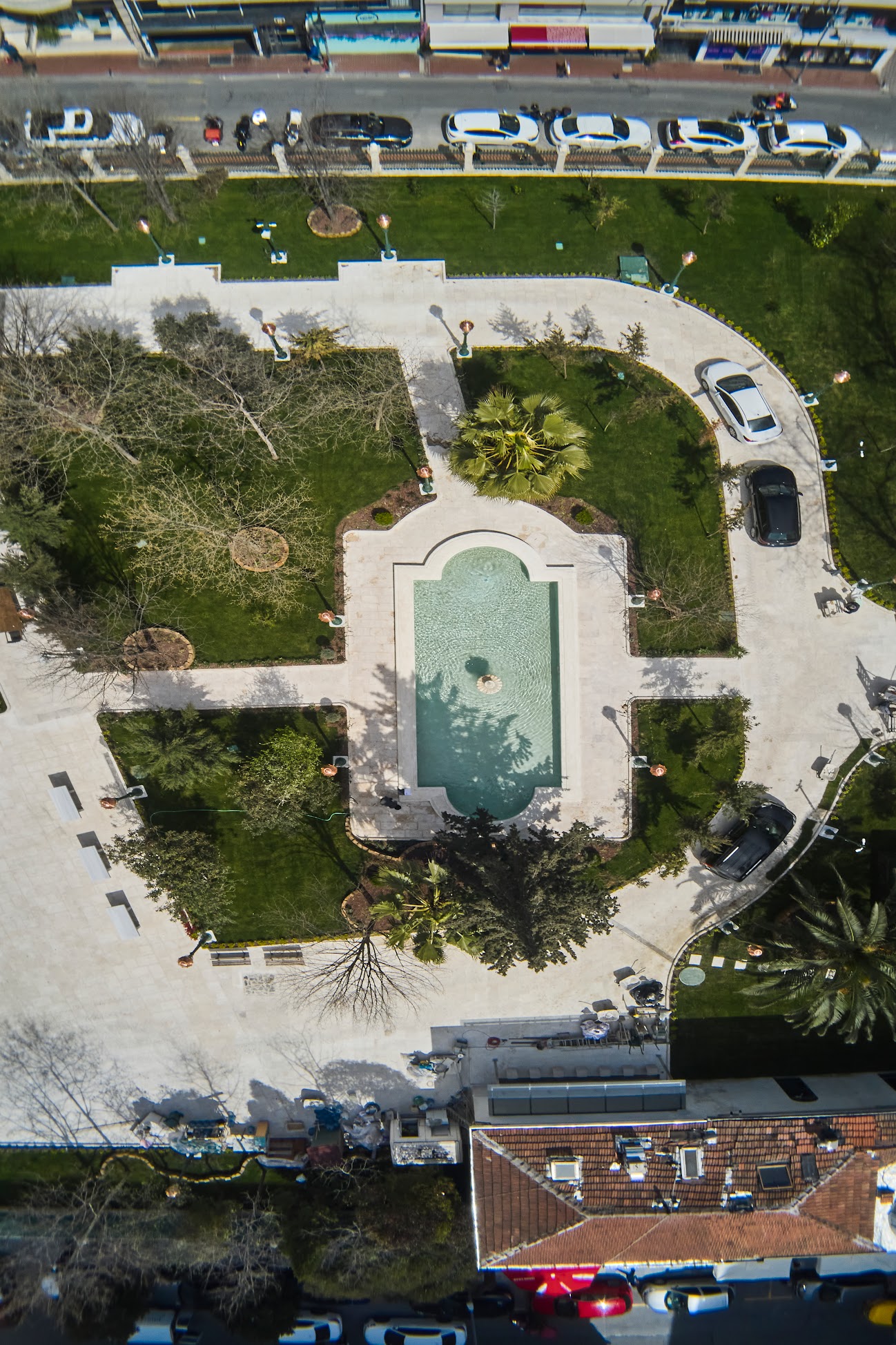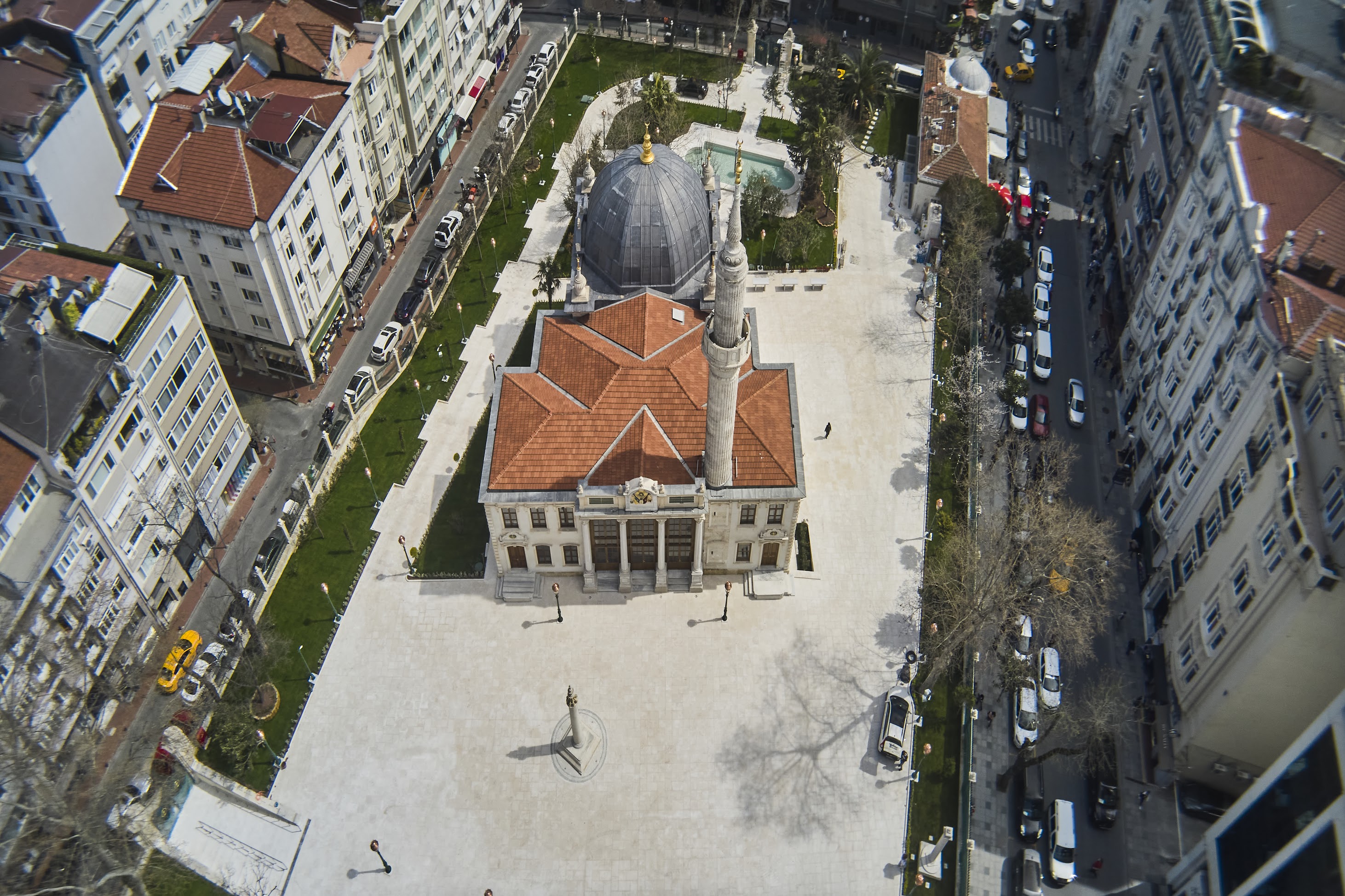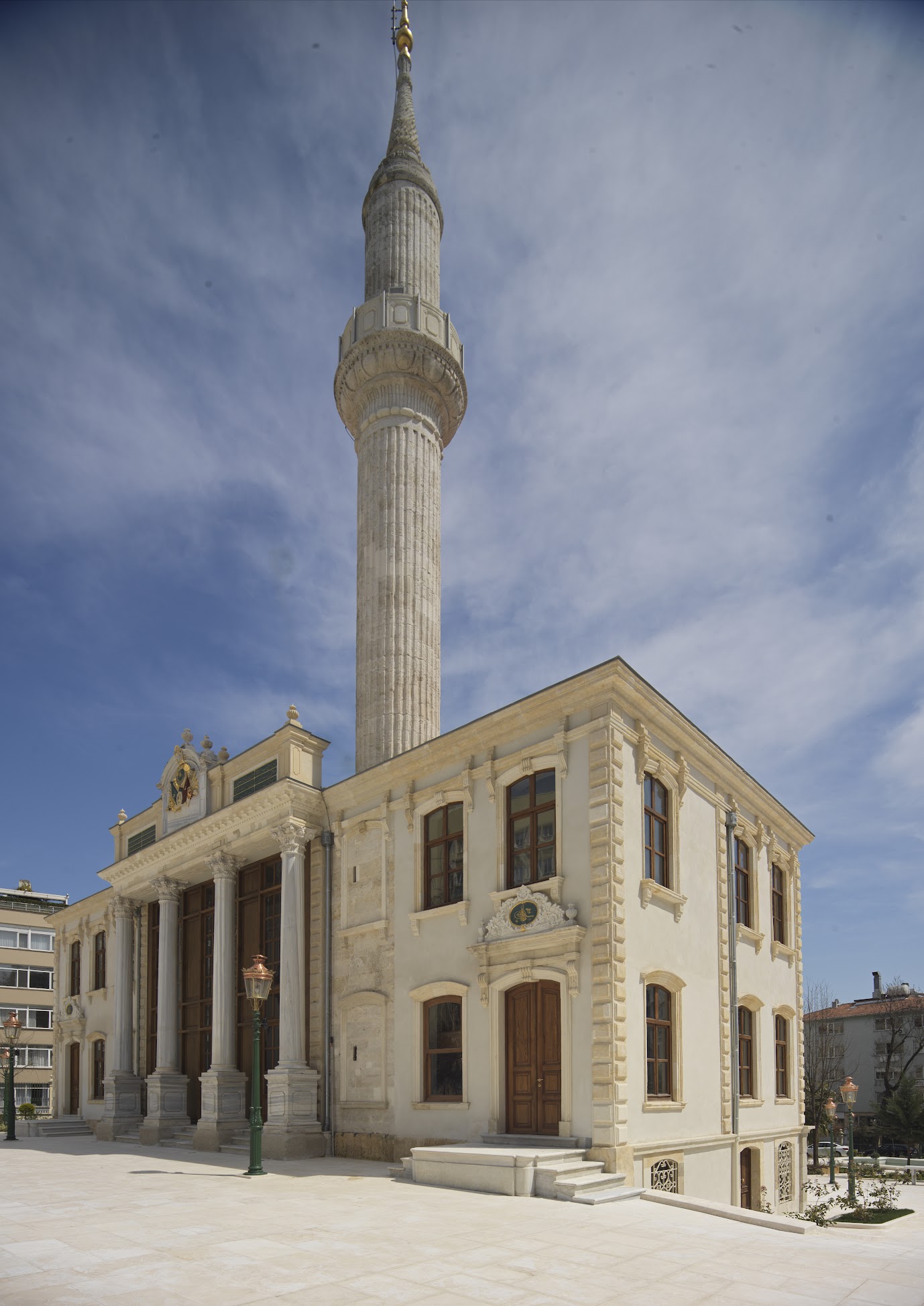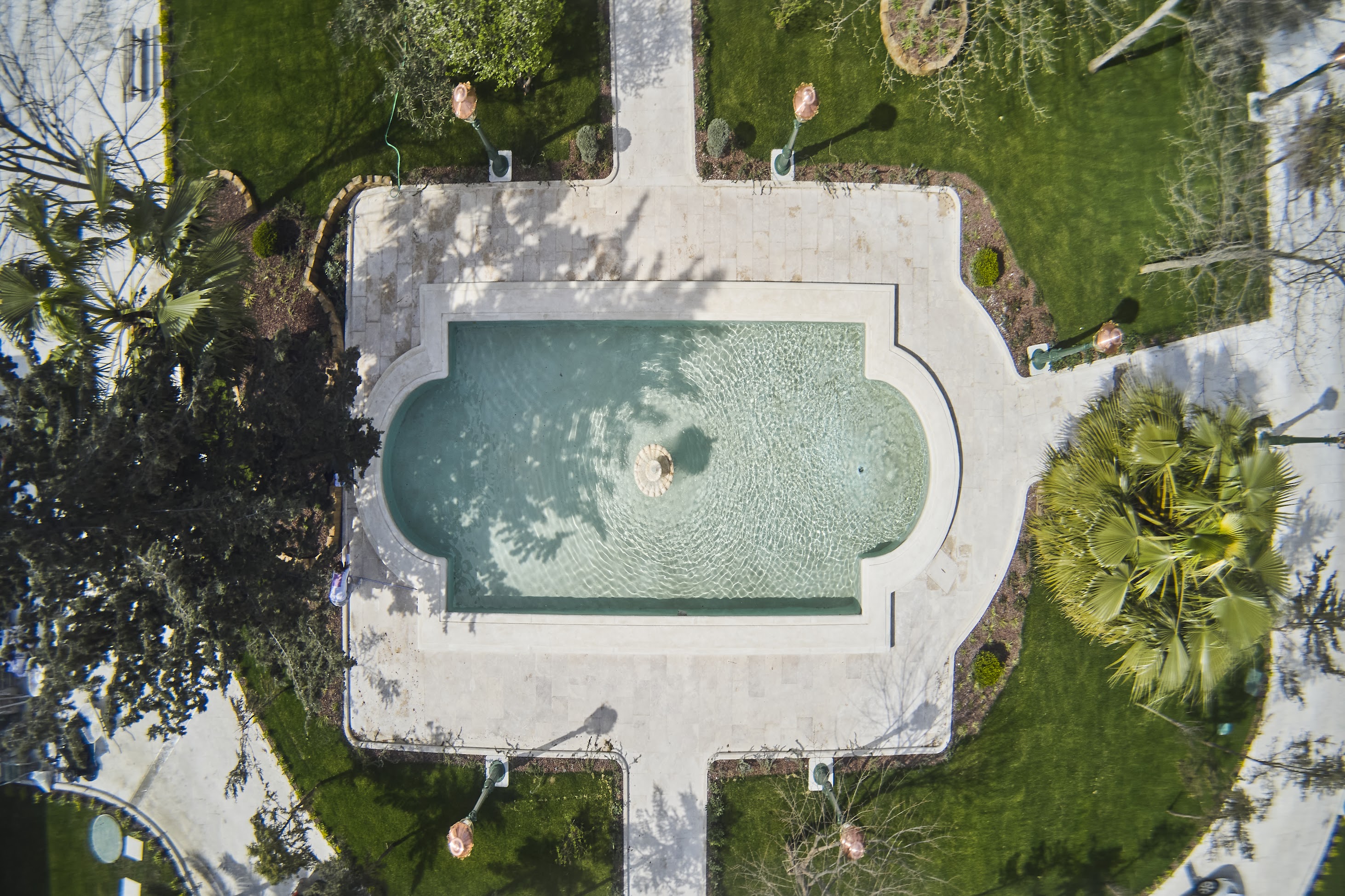TEŞVIKIYE MOSQUE
The current Teşvikiye Mosque stands on the site of an earlier mosque commissioned by Sultan Selim III in 1209 AH (1794–95 CE). The existing structure was rebuilt in an elevated form by Sultan Abdülmecid in 1270 AH (1854 CE) and later underwent restorations during the reign of Sultan Abdülhamid II, in 1294 AH (1877 CE) and again in 1309 AH (1891–92 CE). The original architect is believed to be Krikor Amira Balyan. During Abdülmecid’s era, Garabet Balyan and his son Nikogos Bey collaborated on the design, while the 1877 restoration was carried out by Küçük Yorgi Kalfa and the 1891–92 renovation by Yuvan Efendi.
Two historical target stones located in the mosque courtyard indicate that shooting drills were once conducted in the vicinity. The mosque has a nearly square rectangular plan. Part of the ground floor houses the last congregation area (son cemaat yeri). The entrance features four columns and a richly decorated ceiling with colorful ornamental motifs. Smaller domes are positioned at the corners of the large central dome that covers the main prayer hall.
Among the noteworthy features in the courtyard are two menzil (target) stones one erected in 1791 for Sultan Selim III, and the other in 1811 for Sultan Mahmud II.
As ALBA İnşaat, we completed the restoration of the building between 2017 and 2020.


